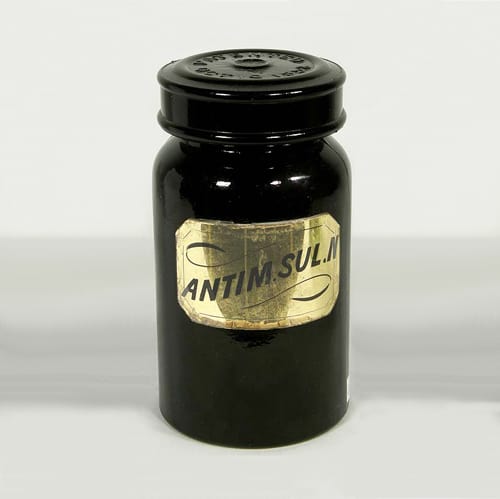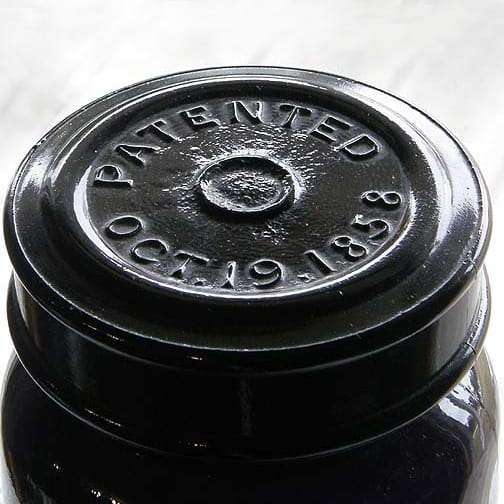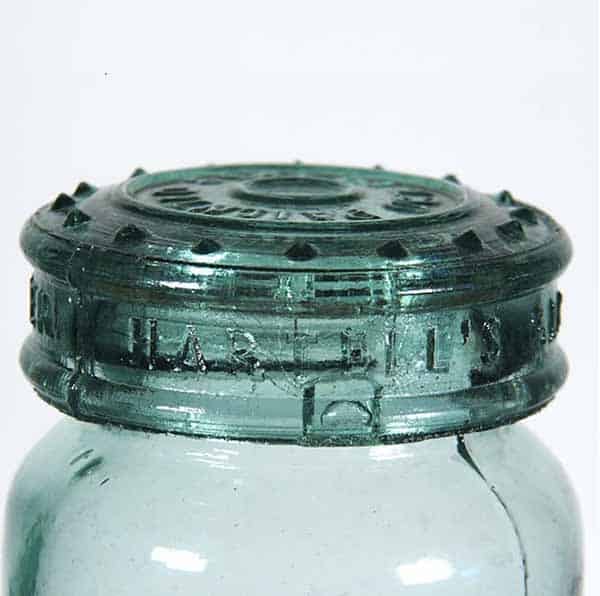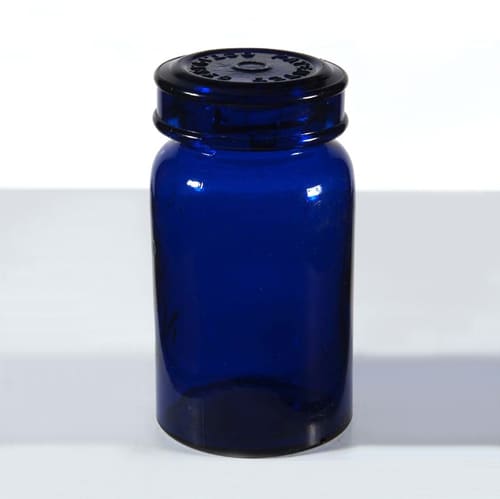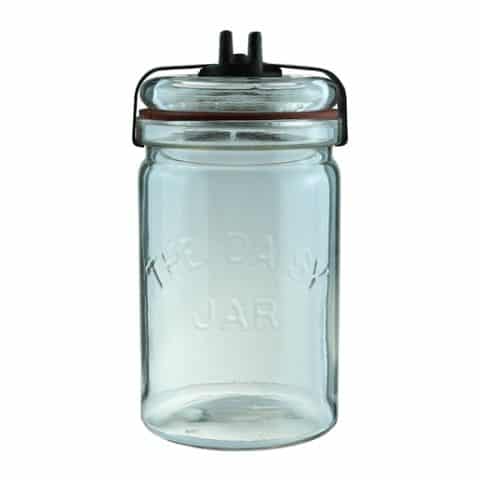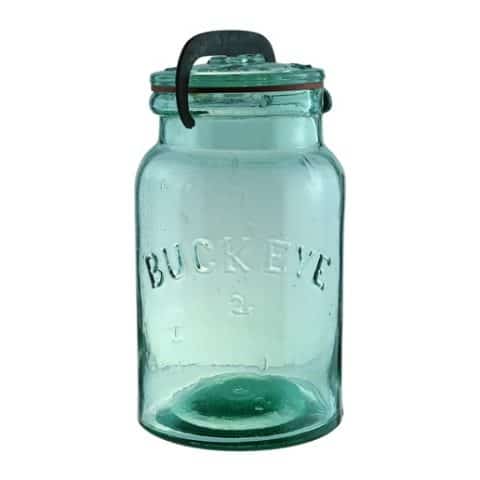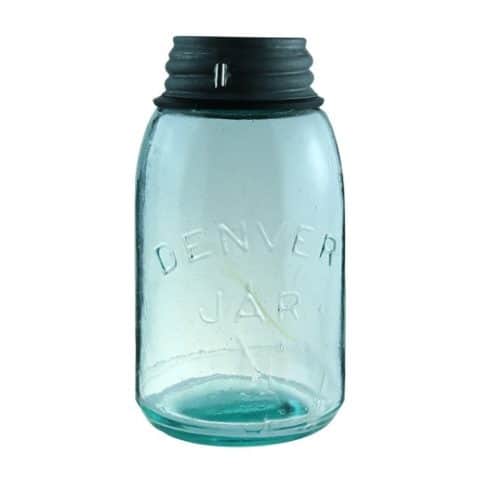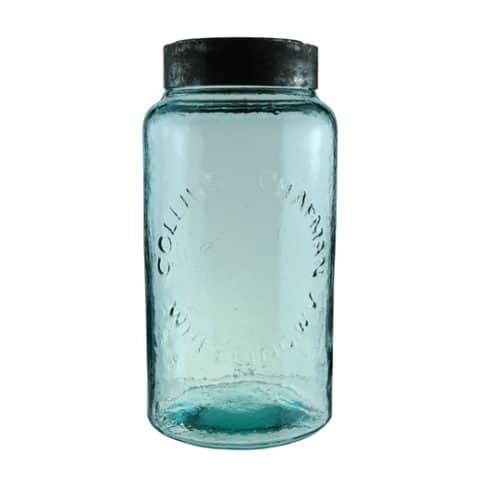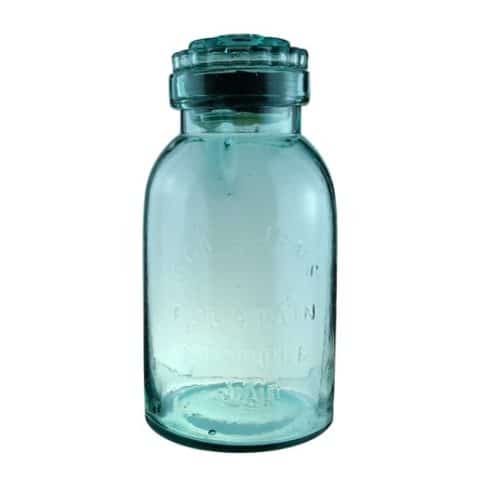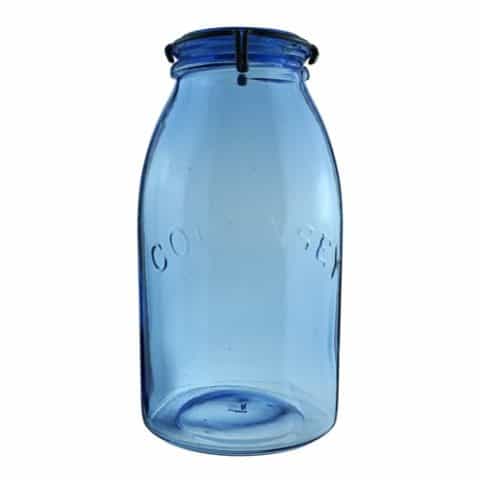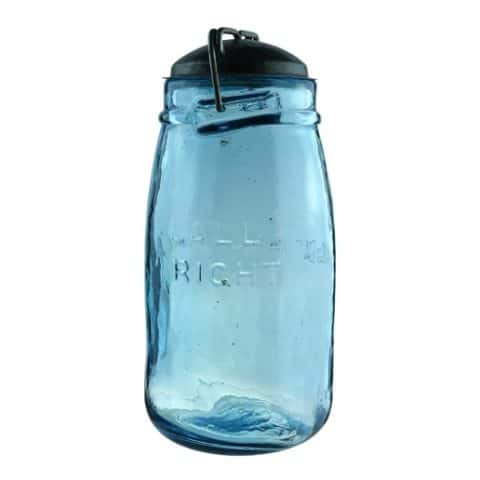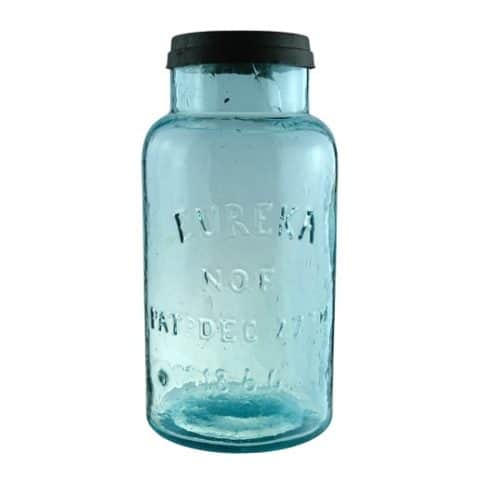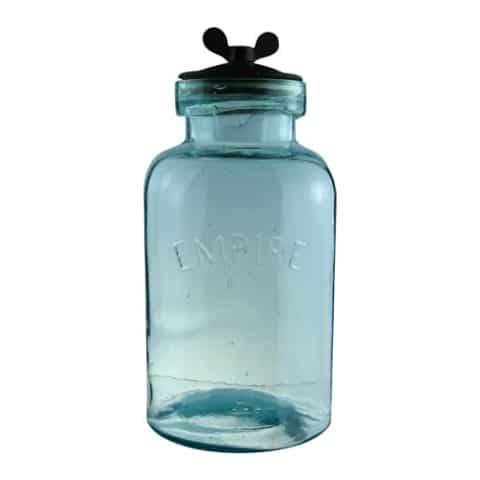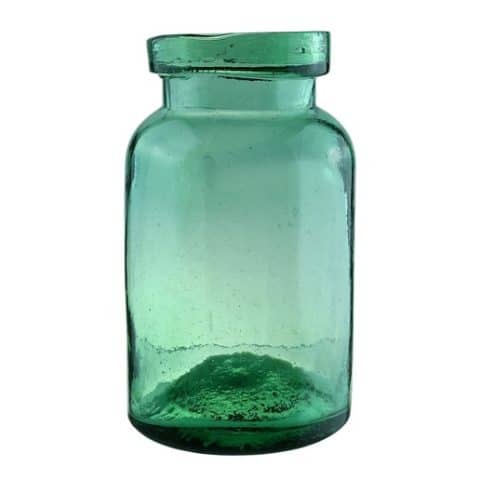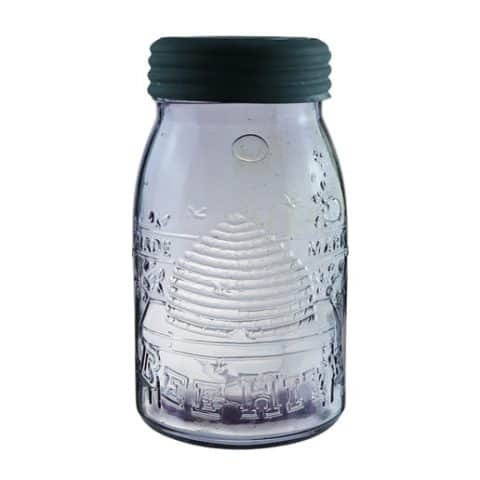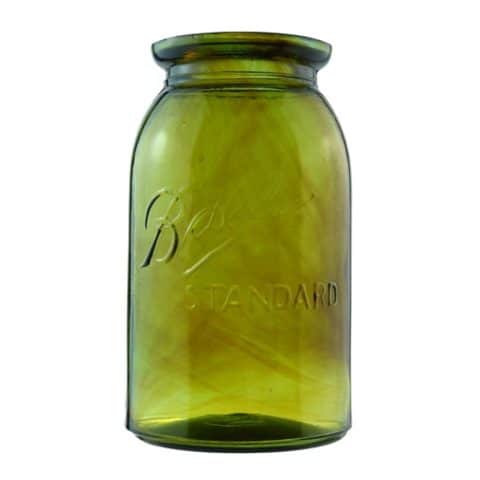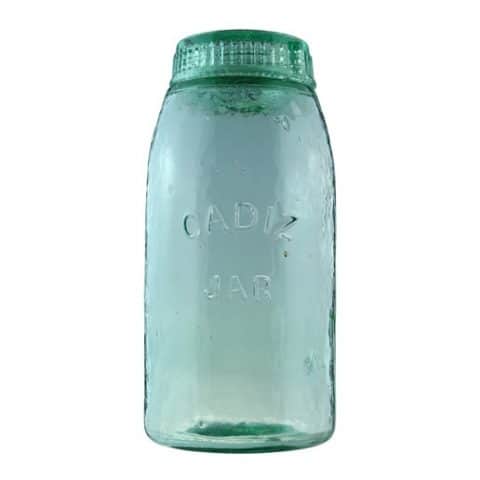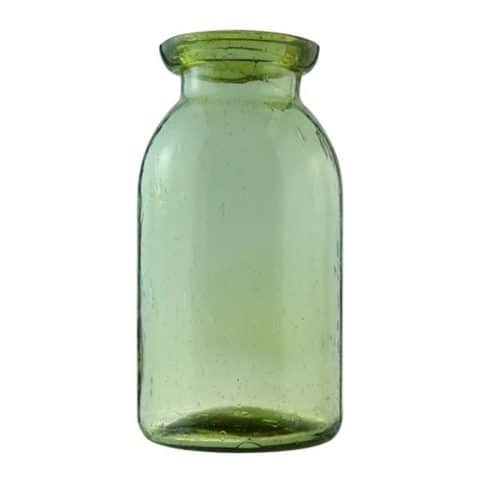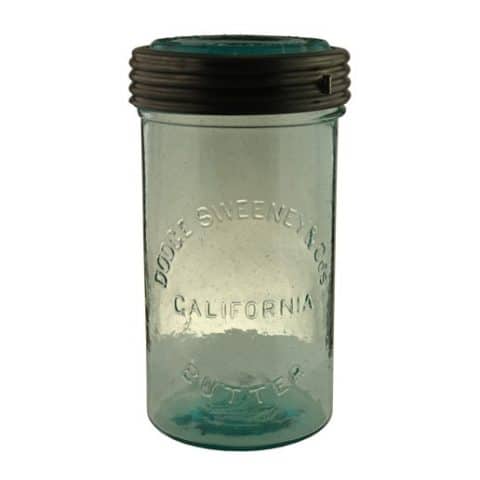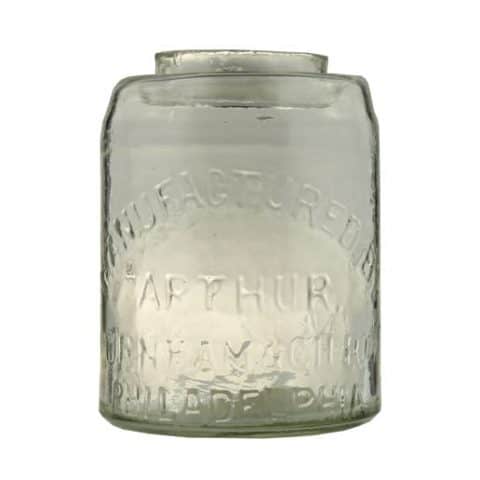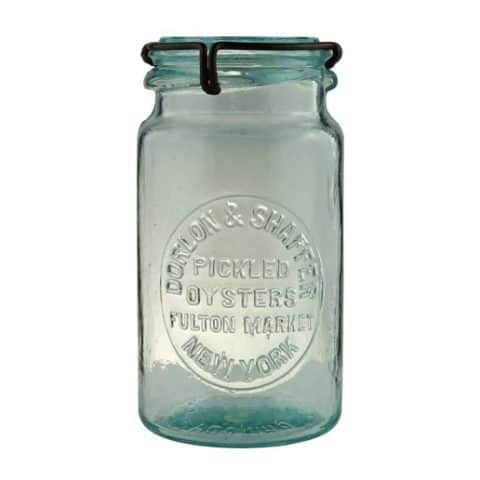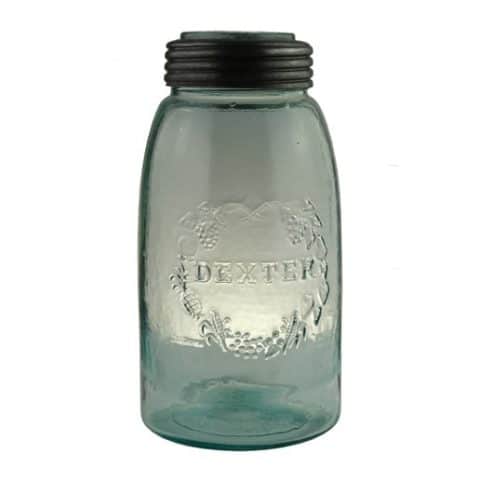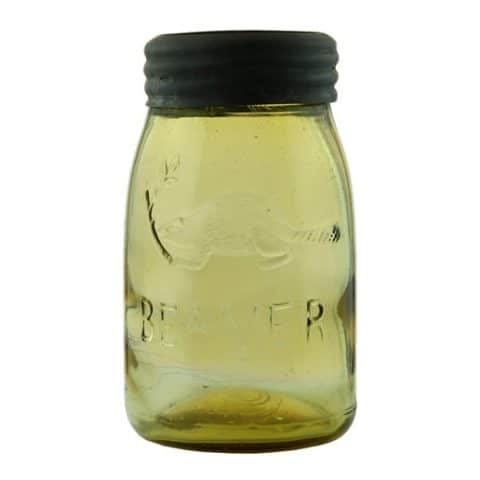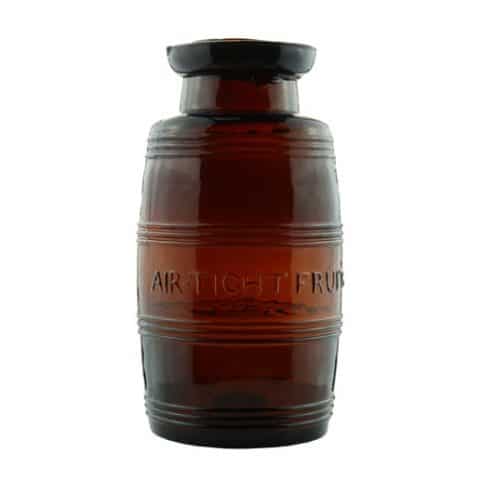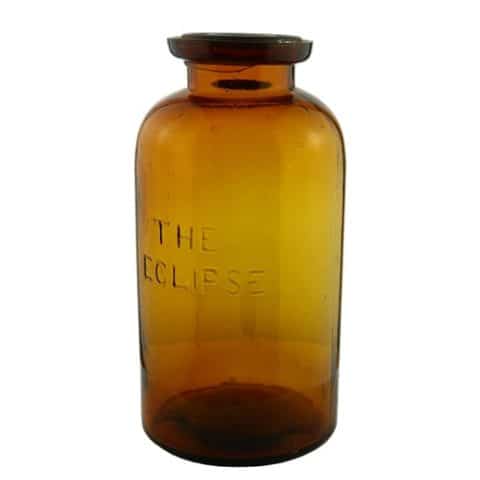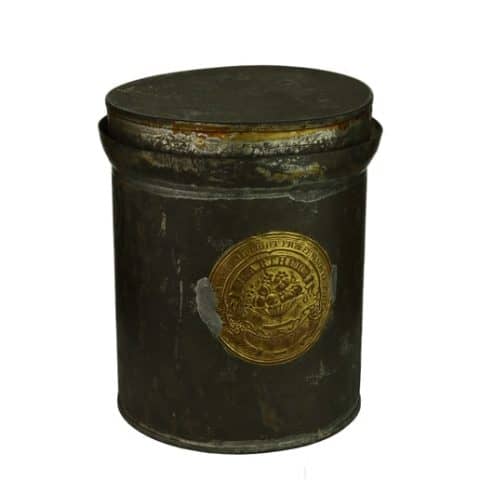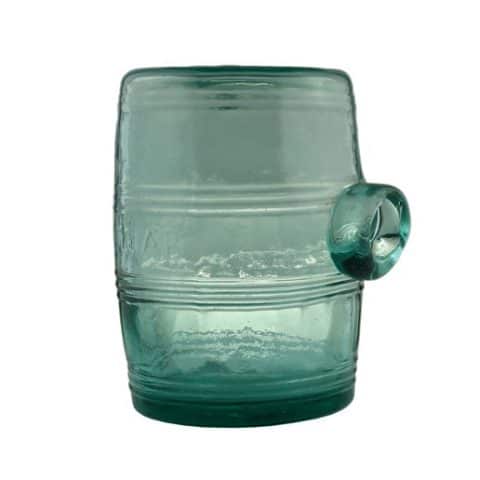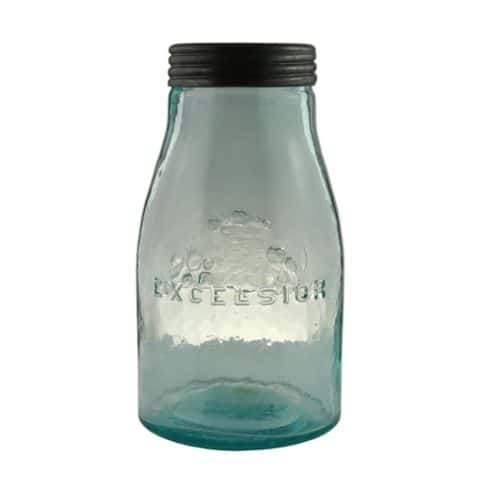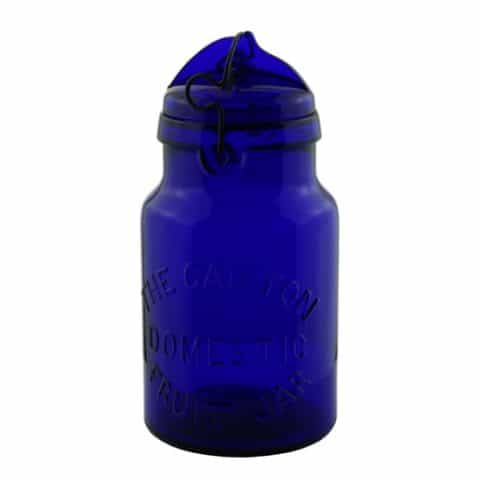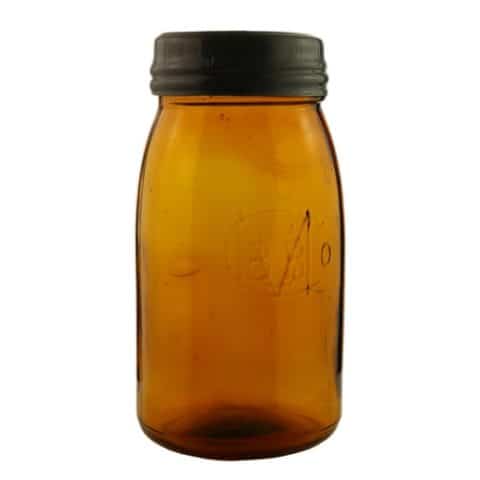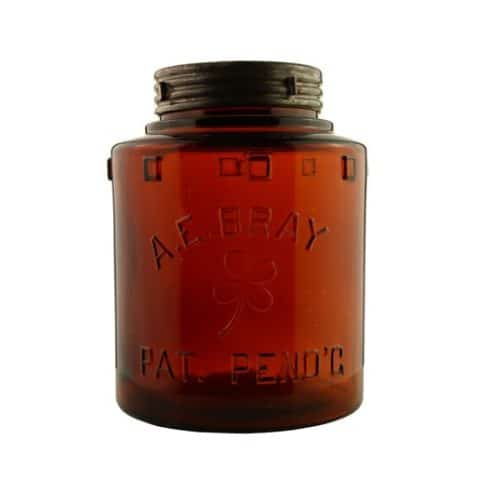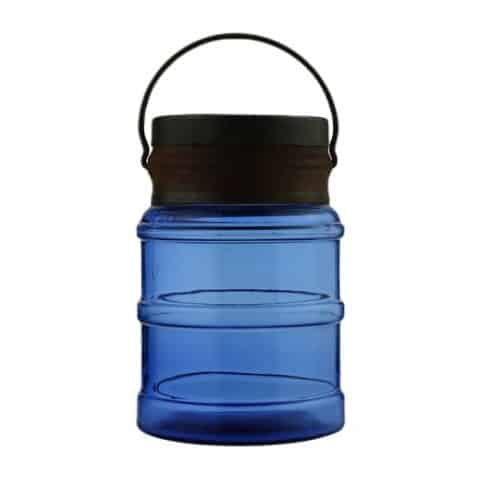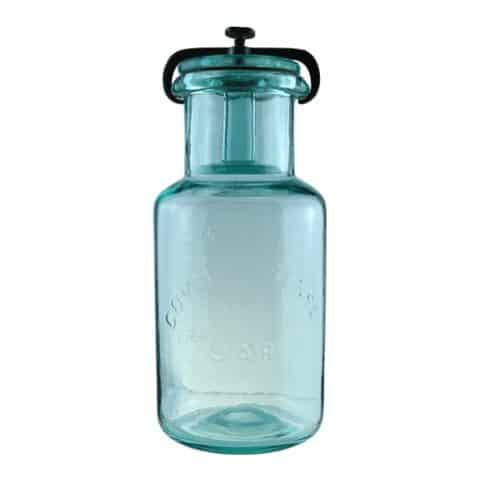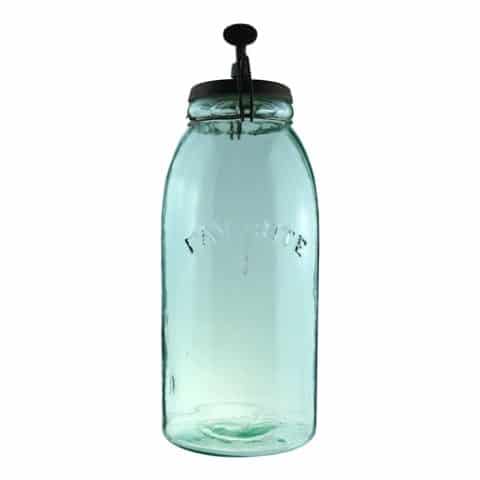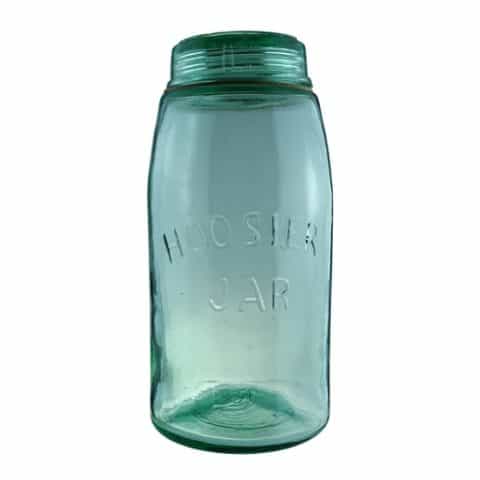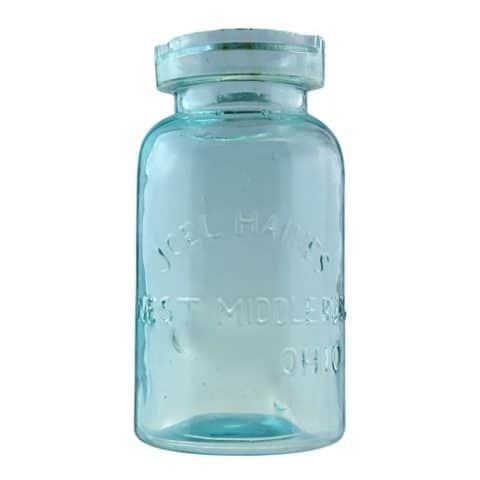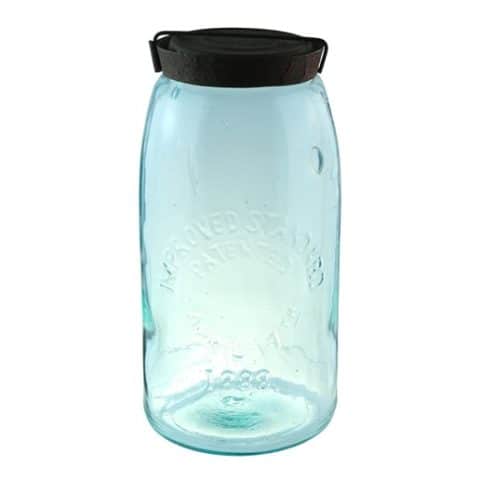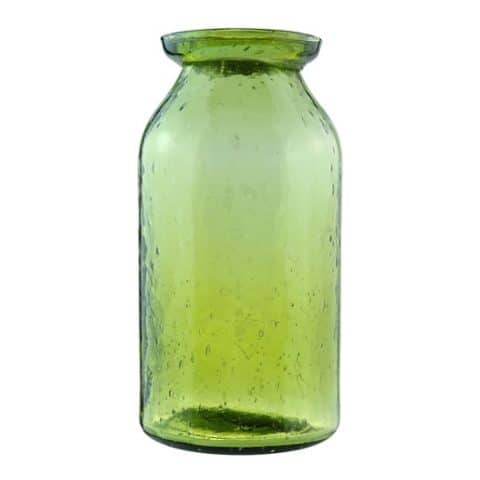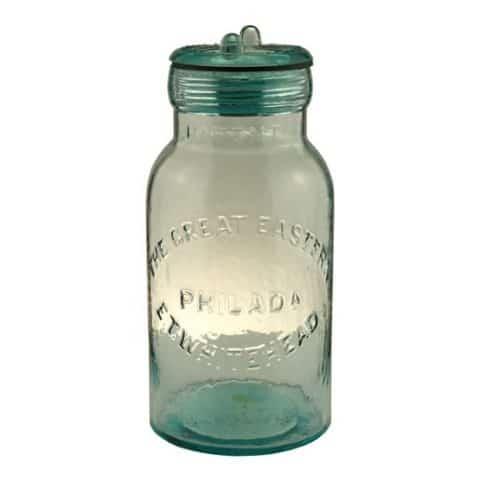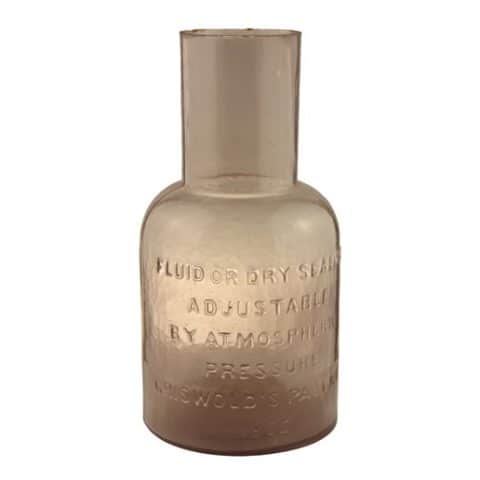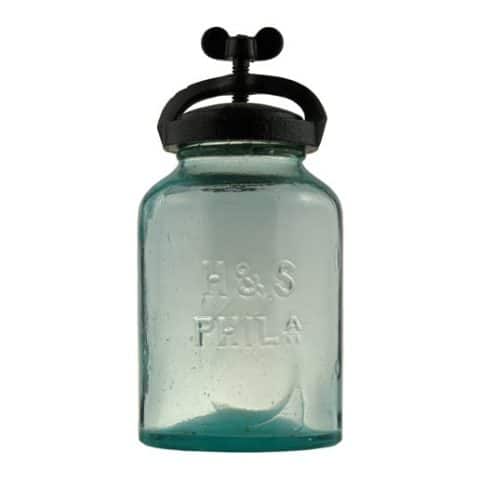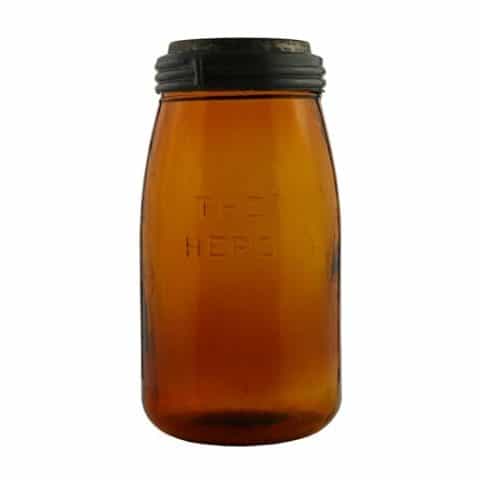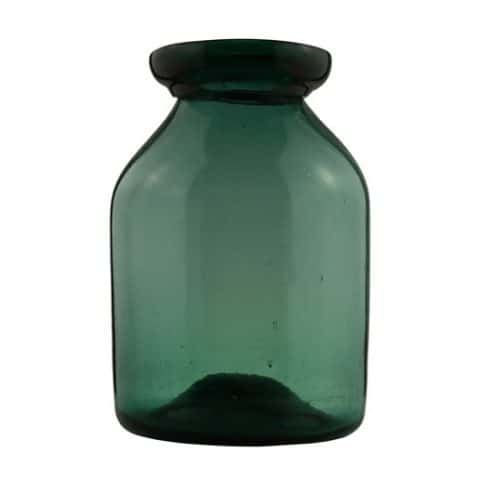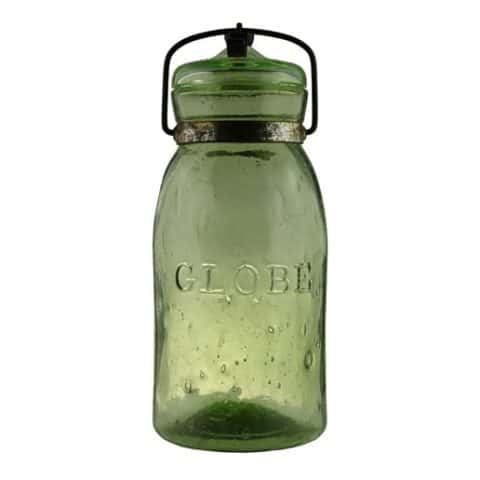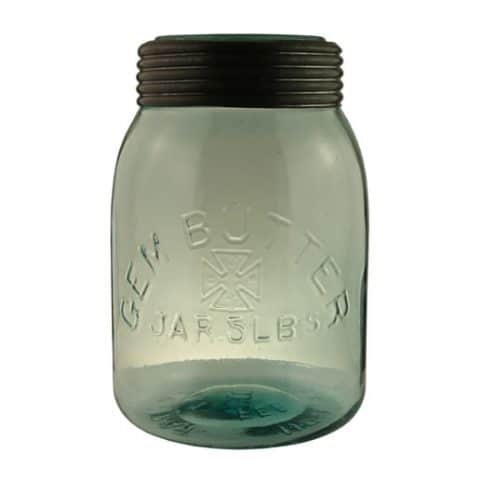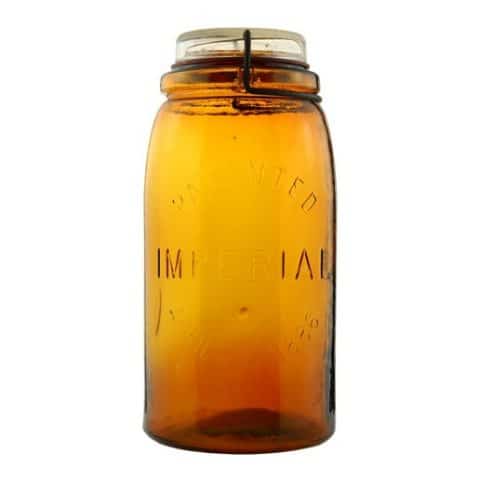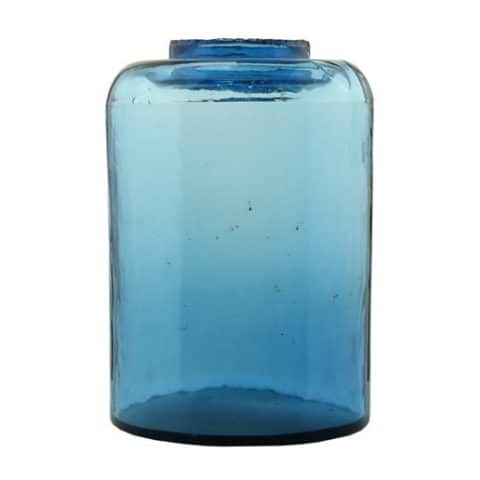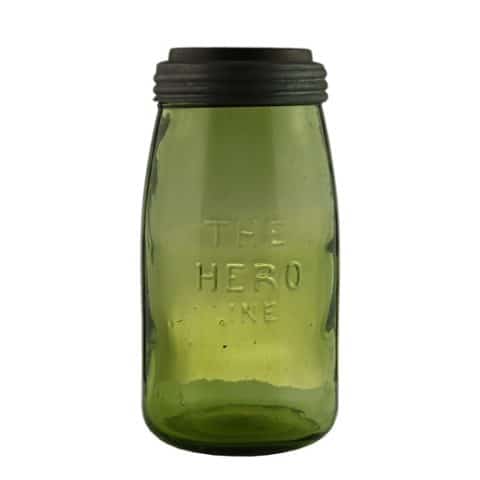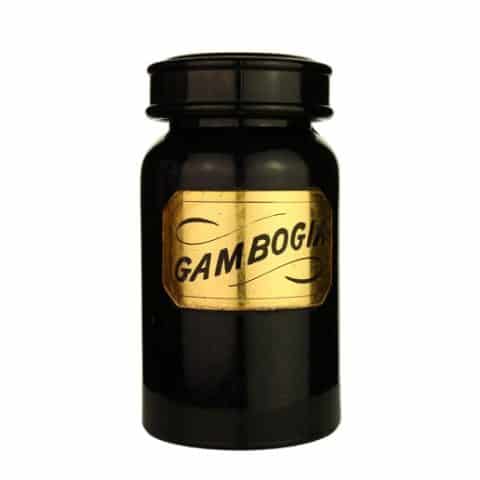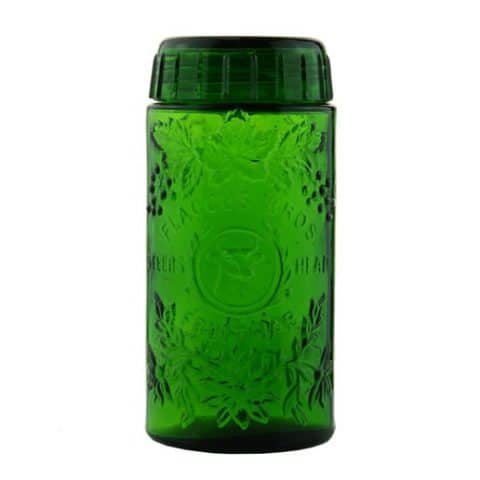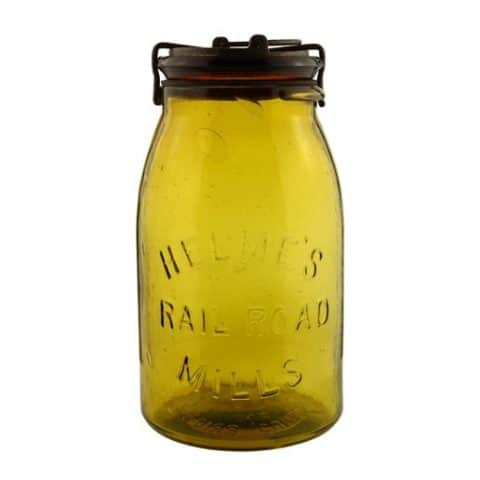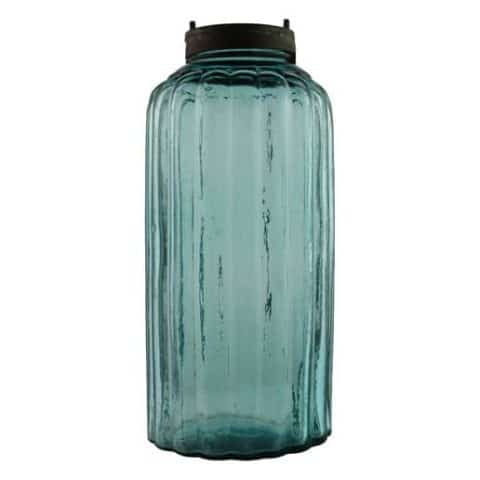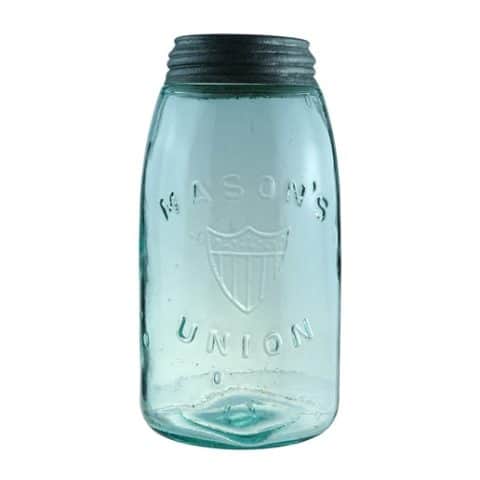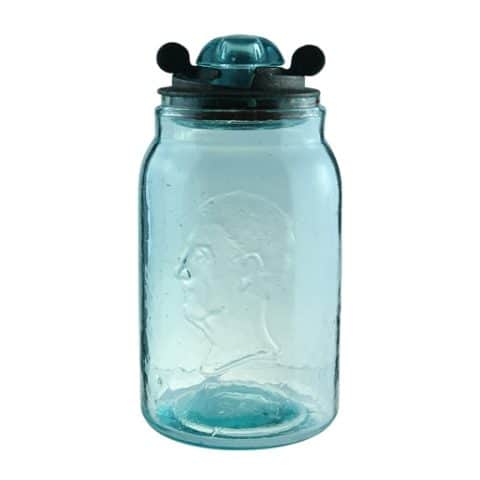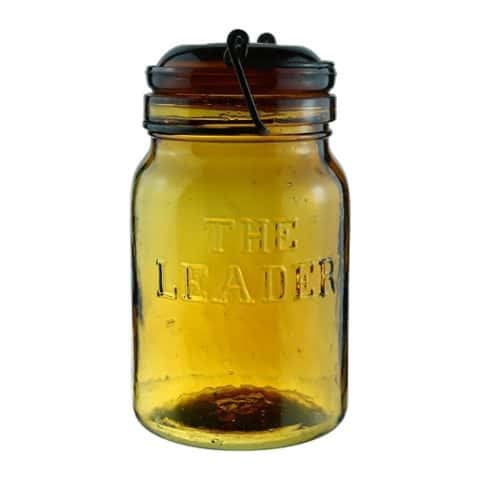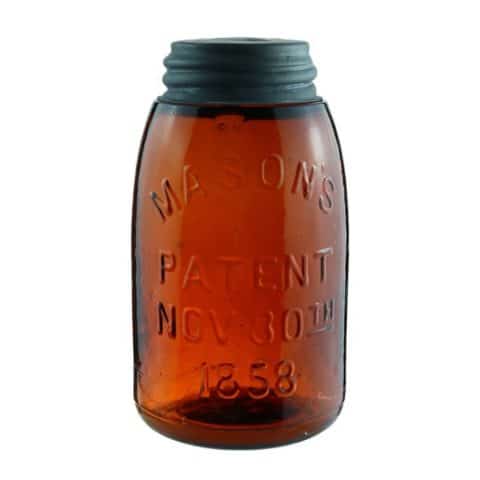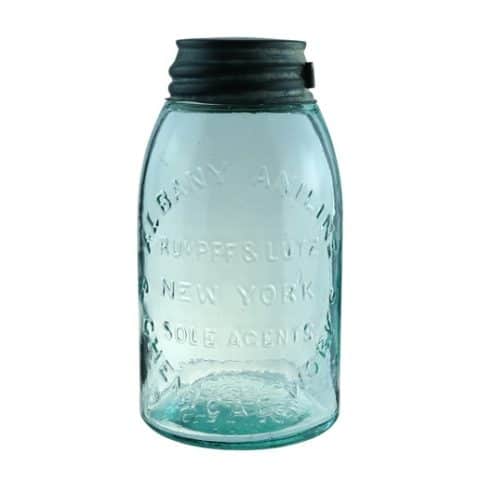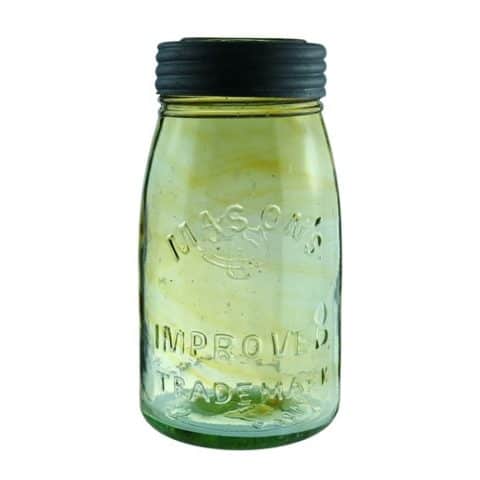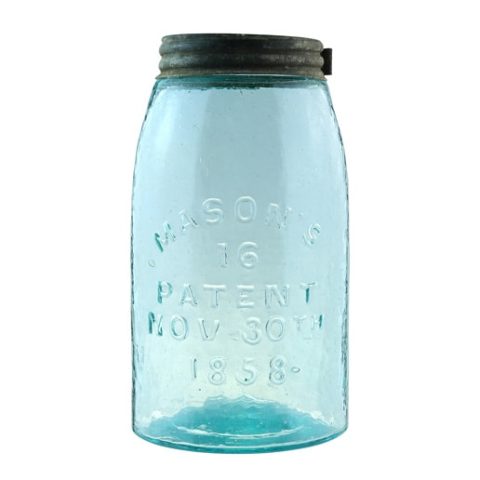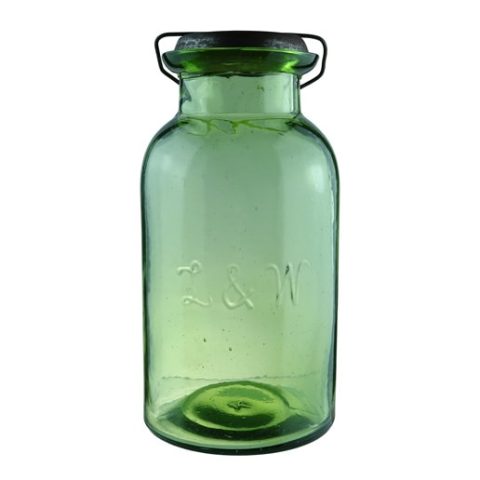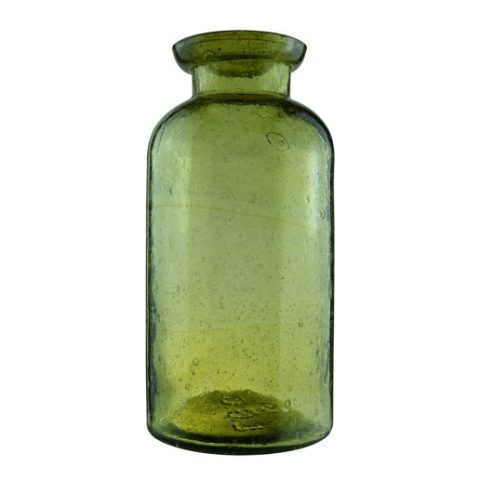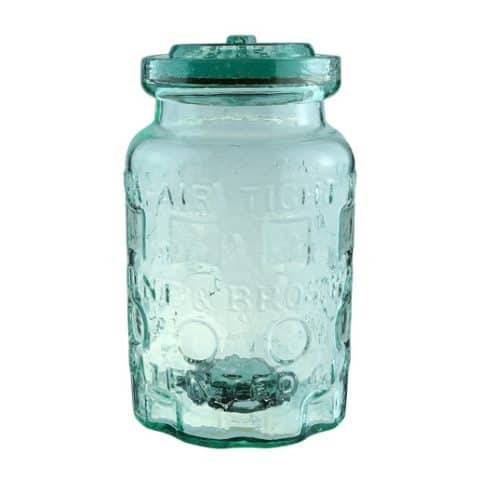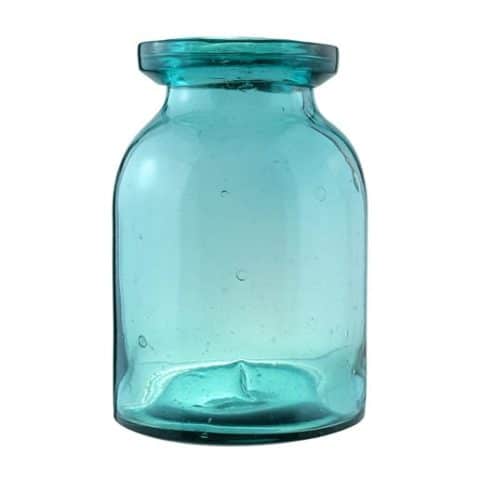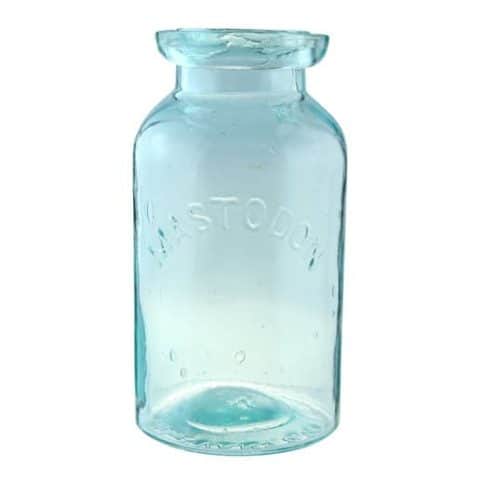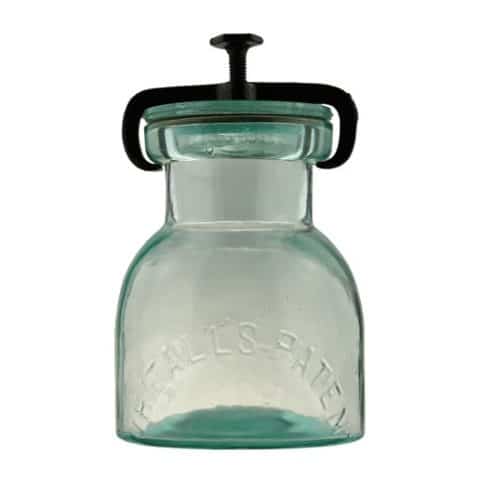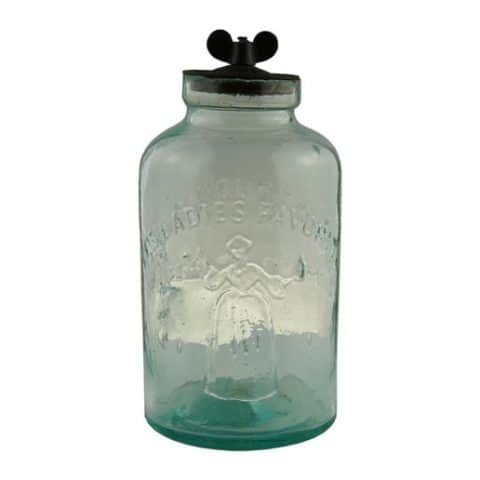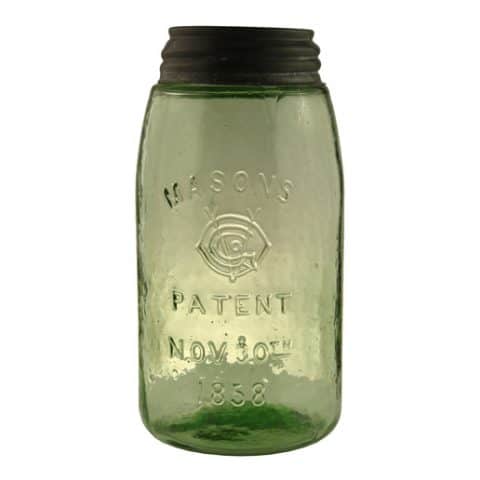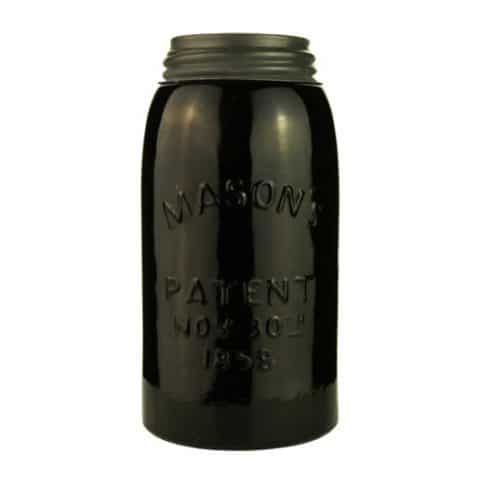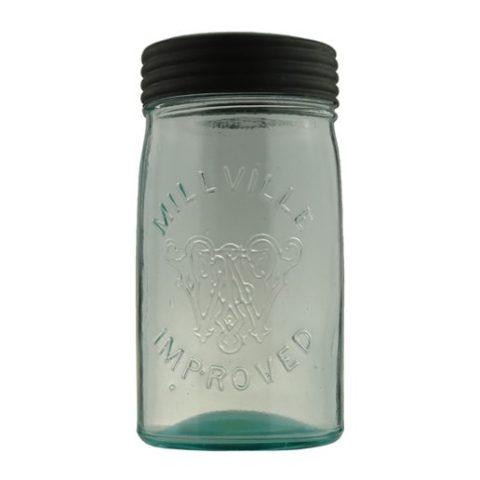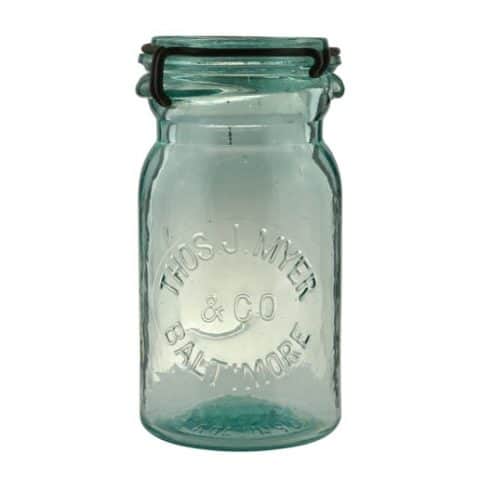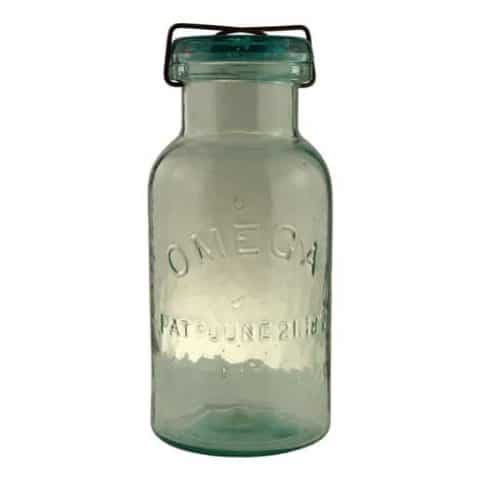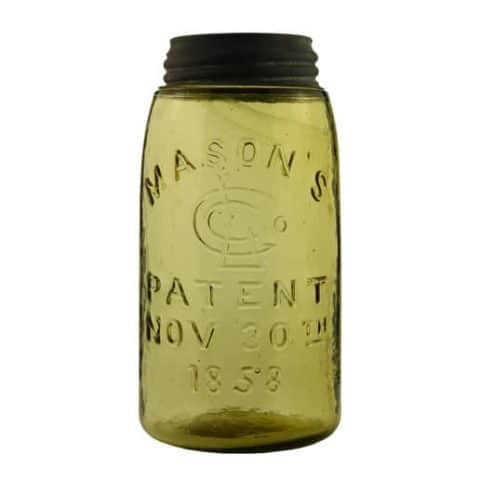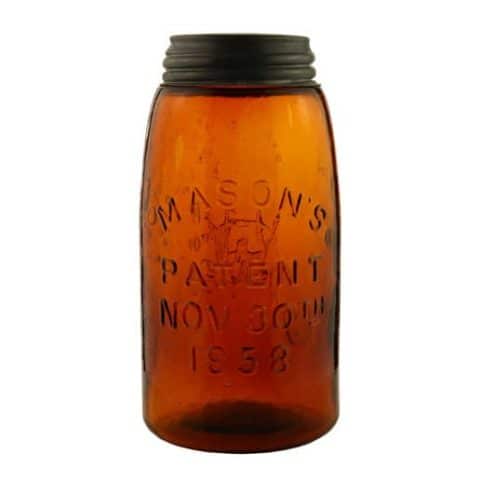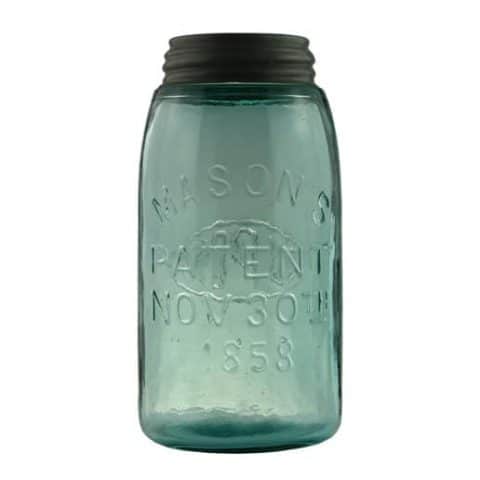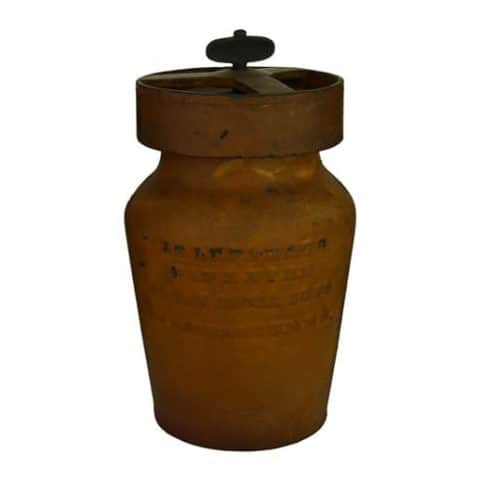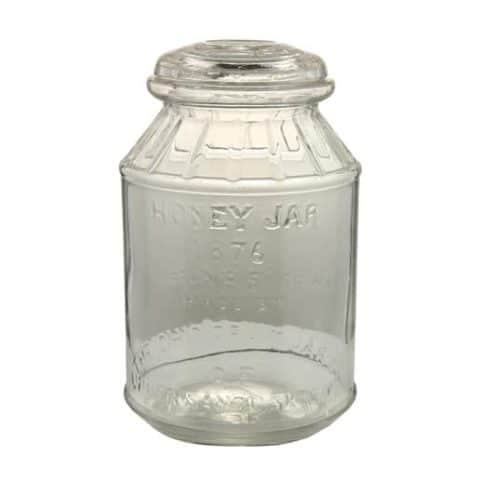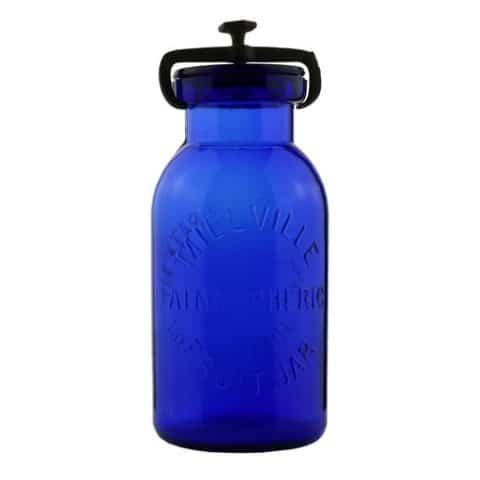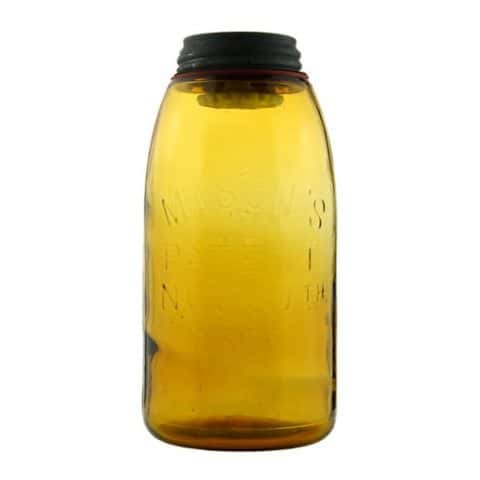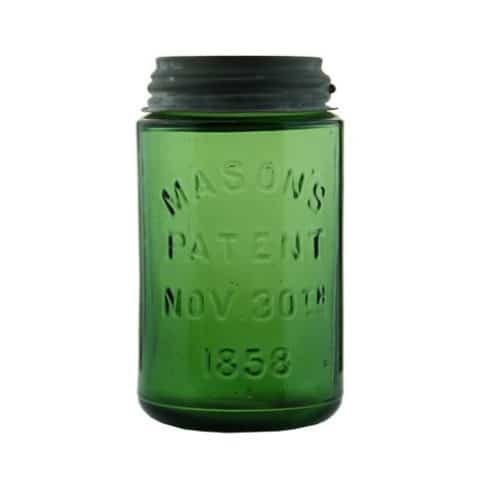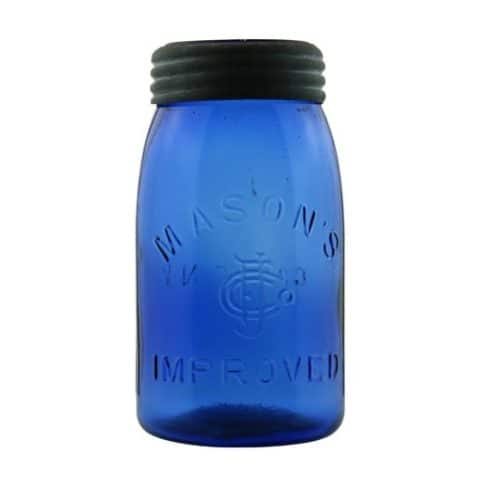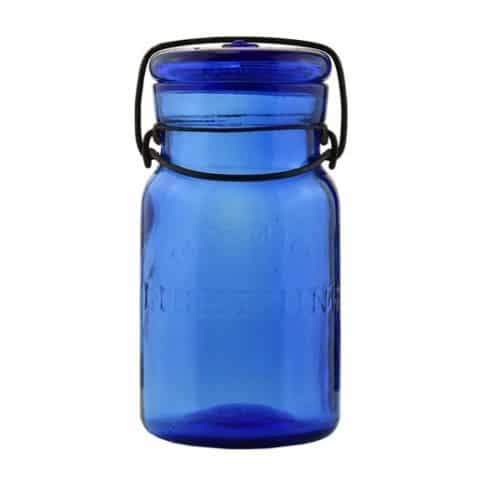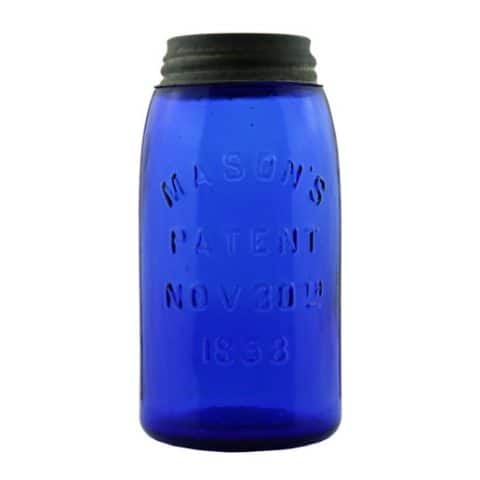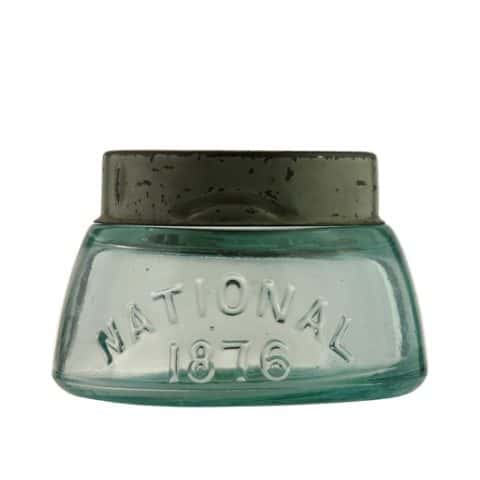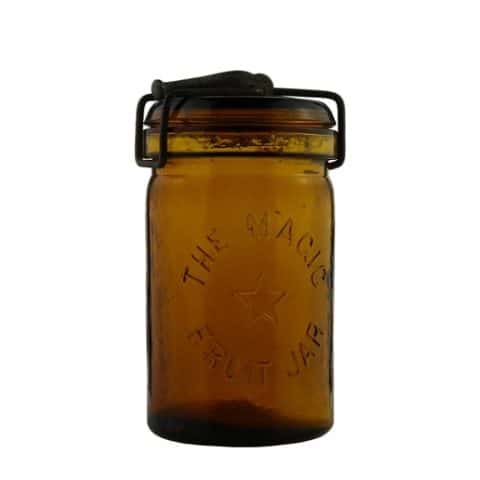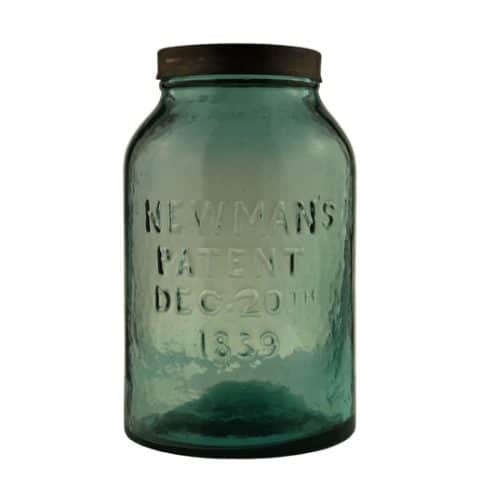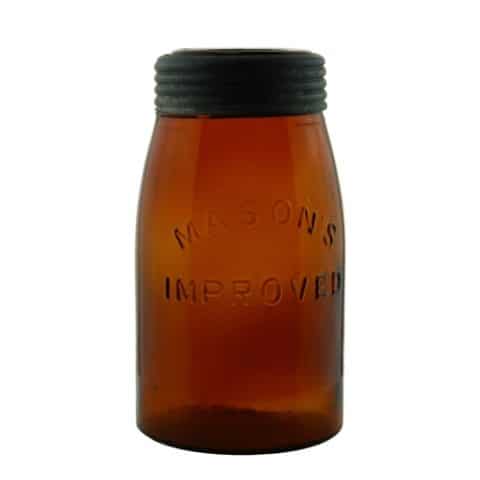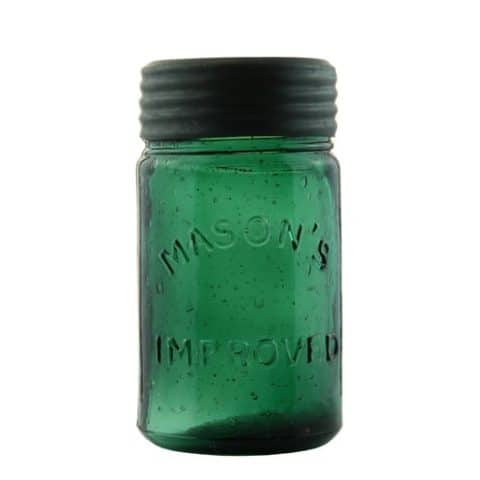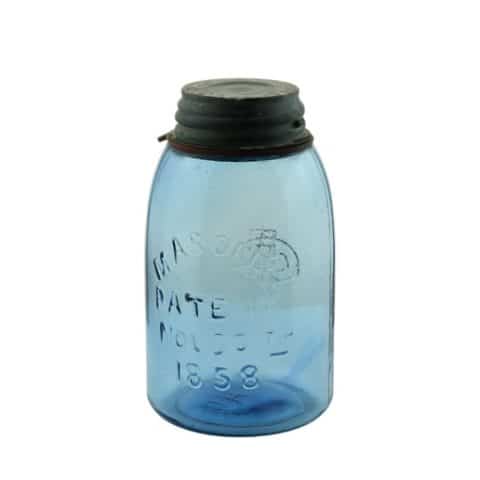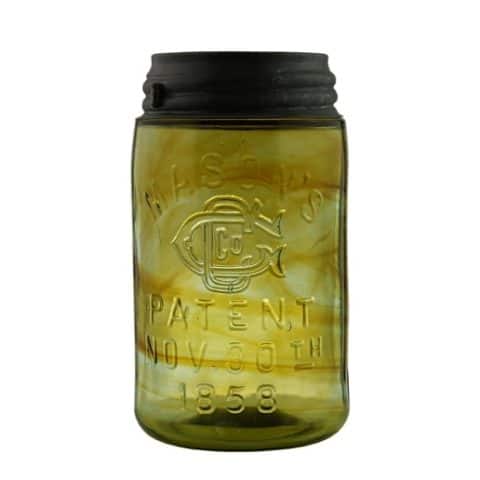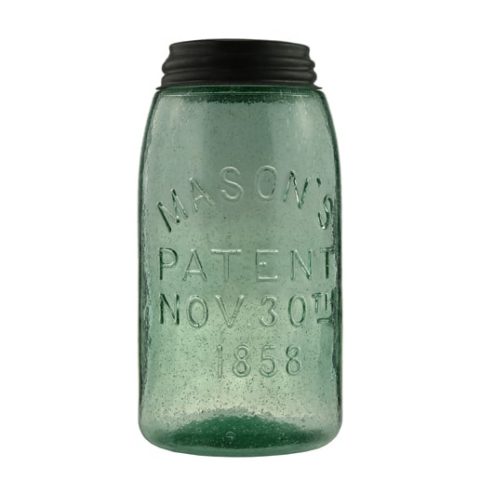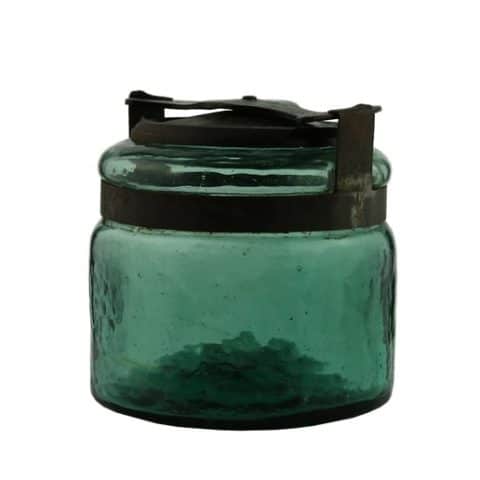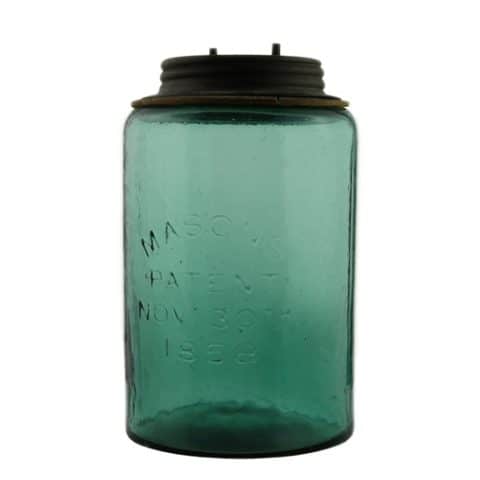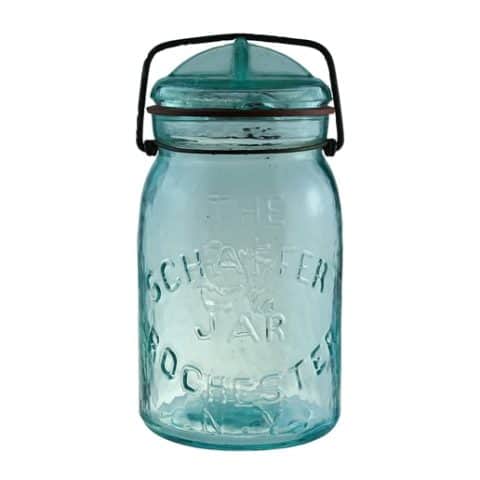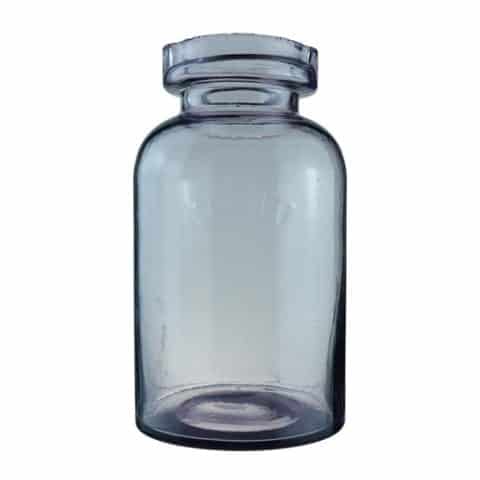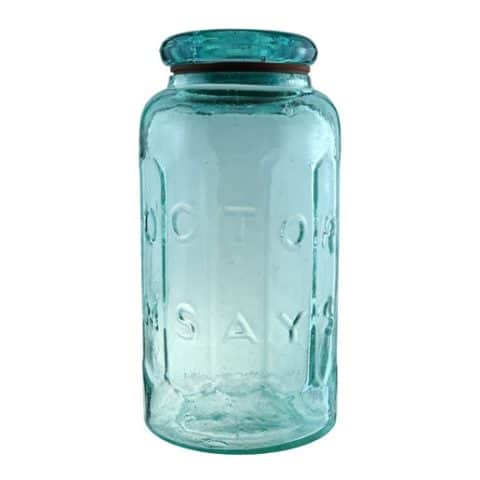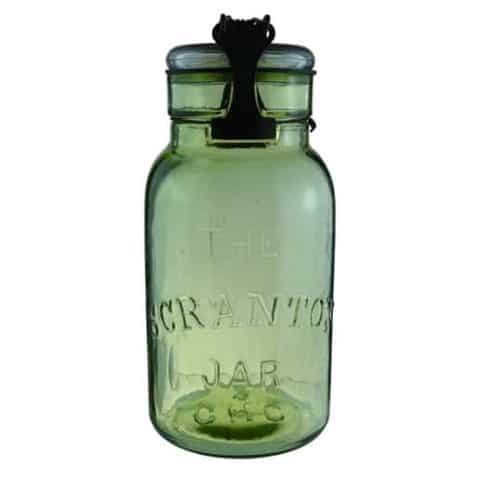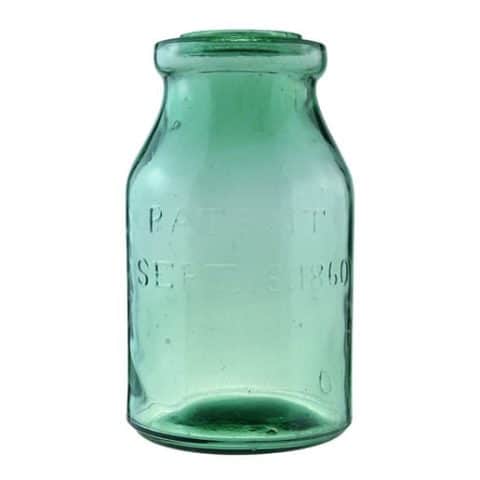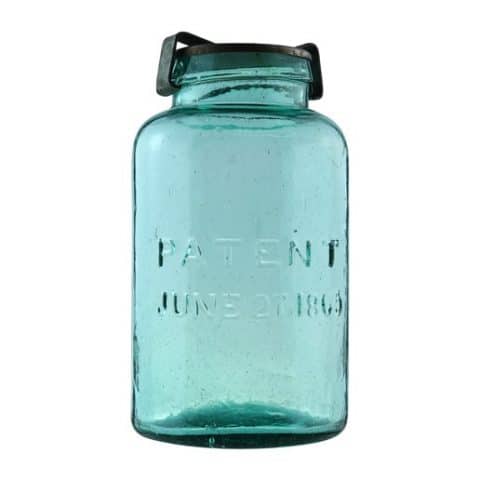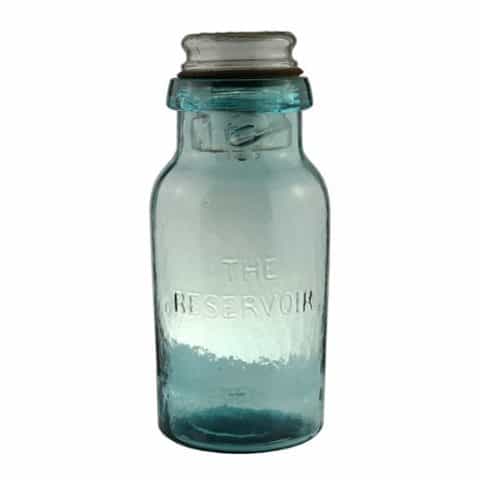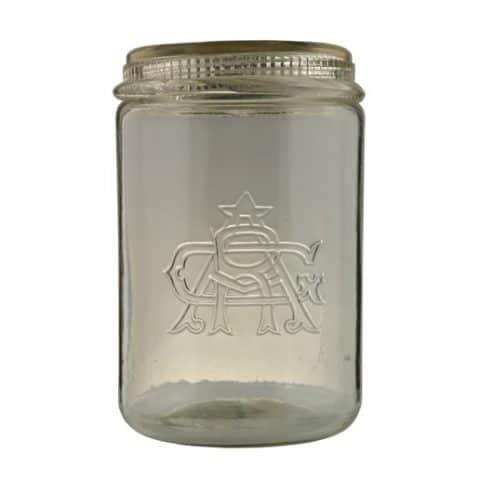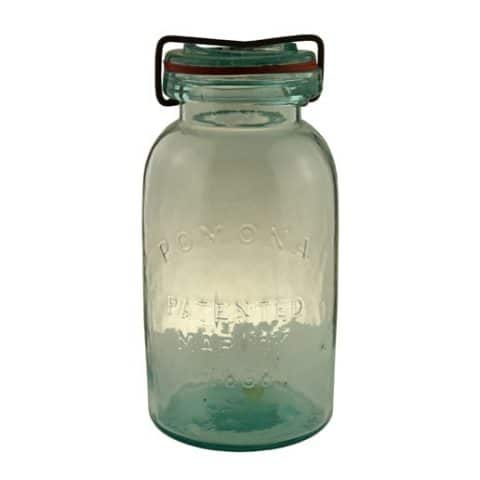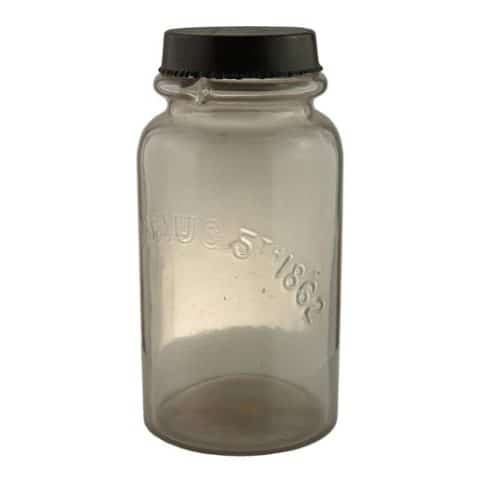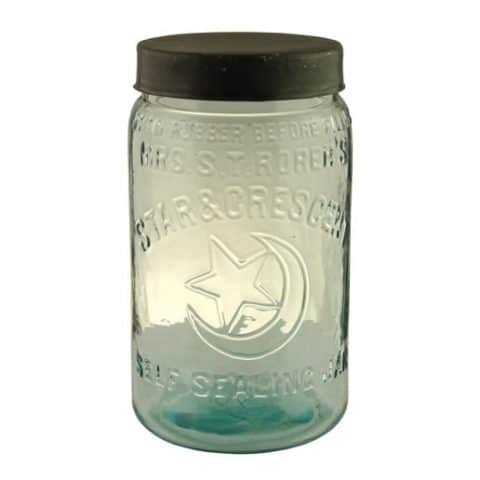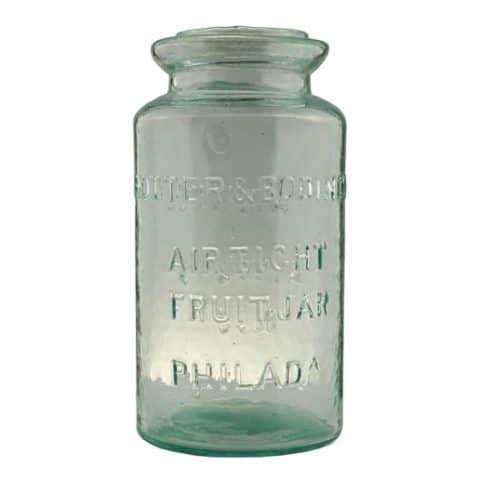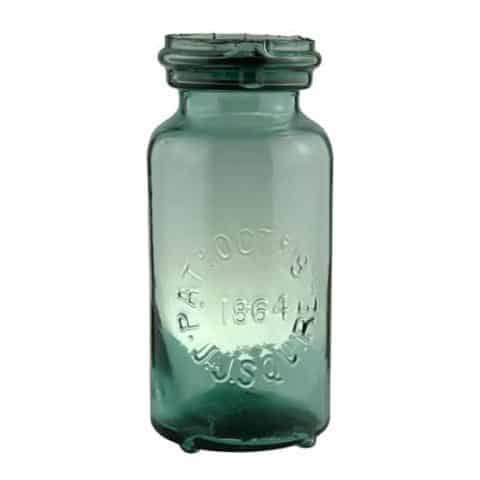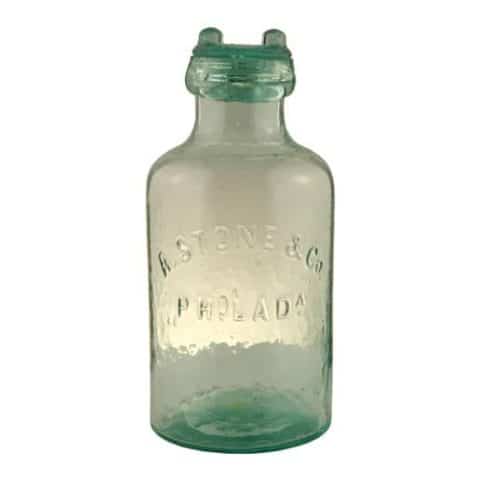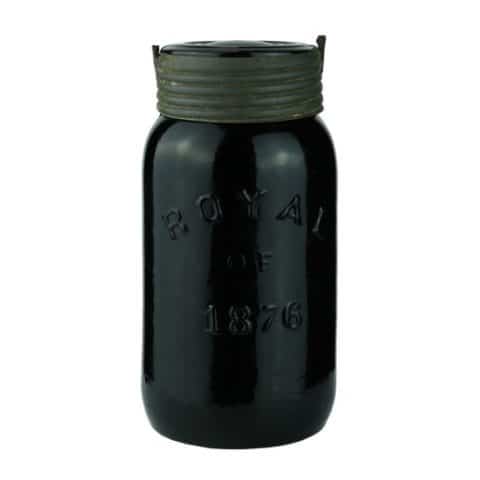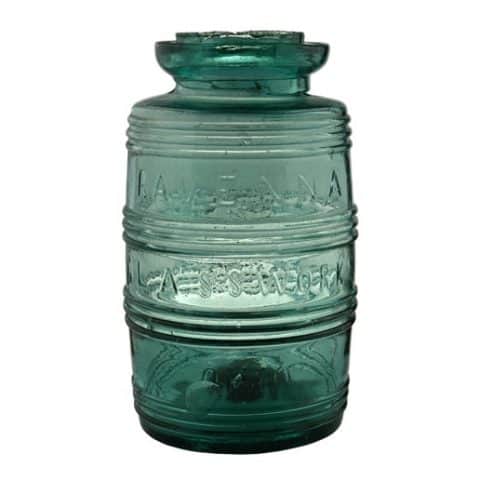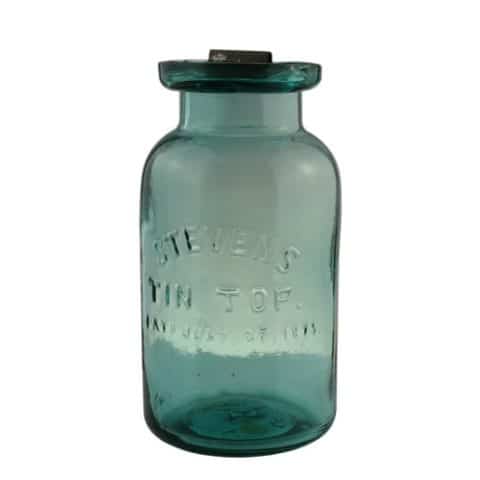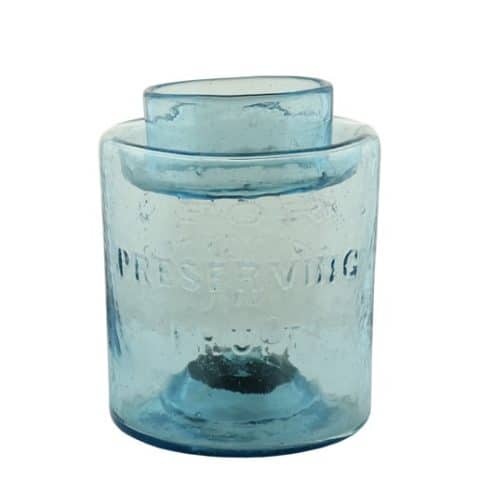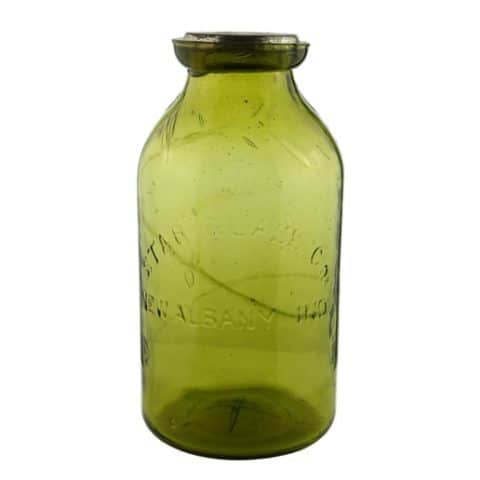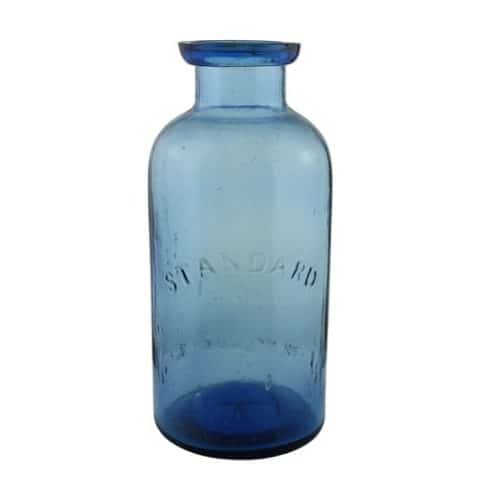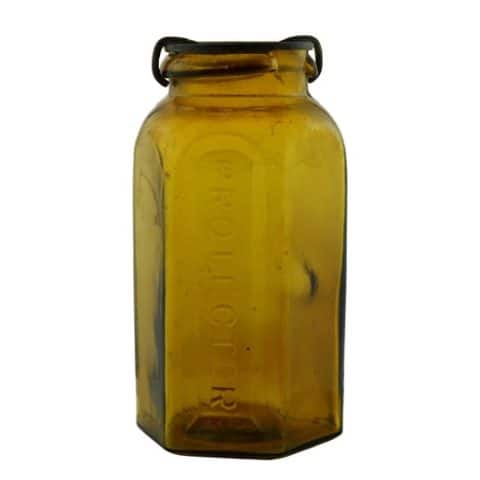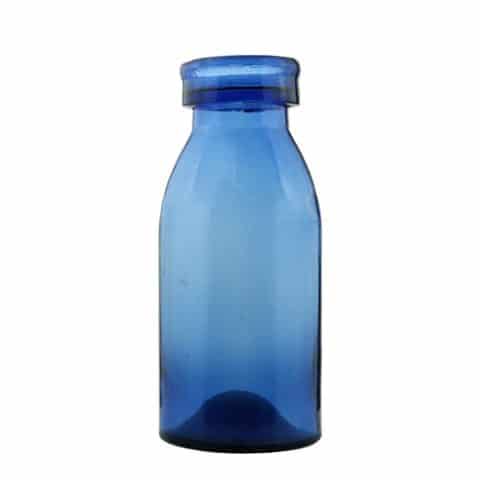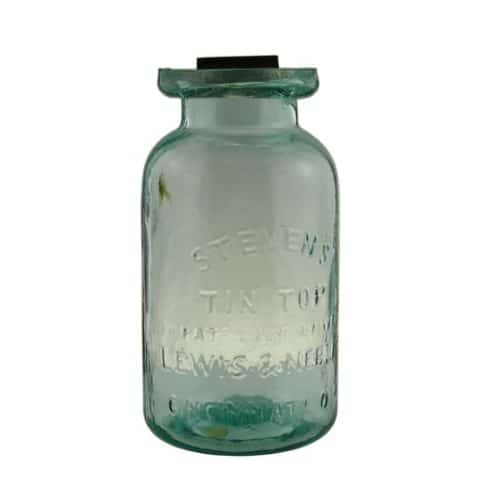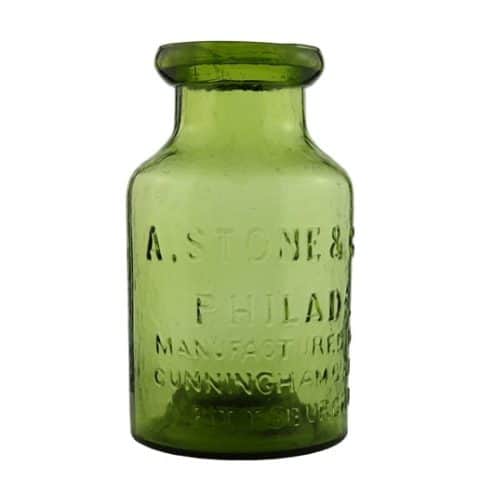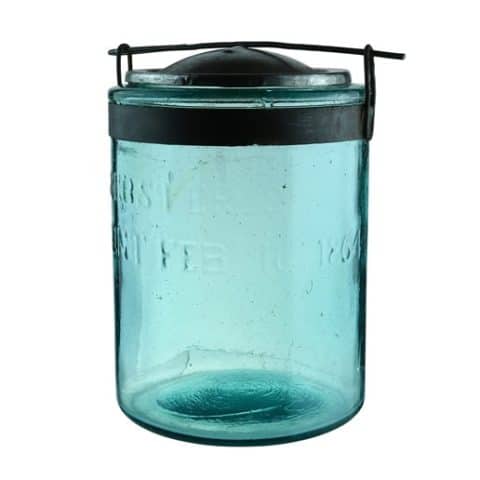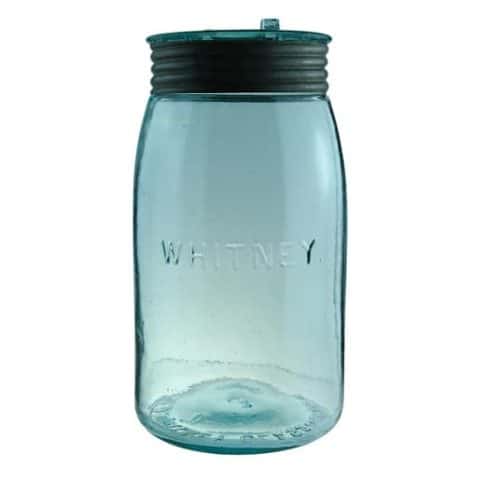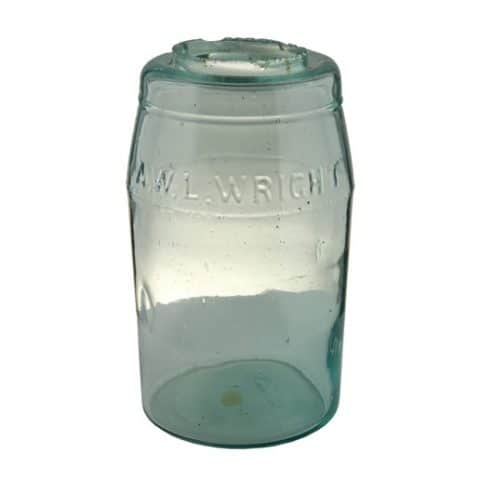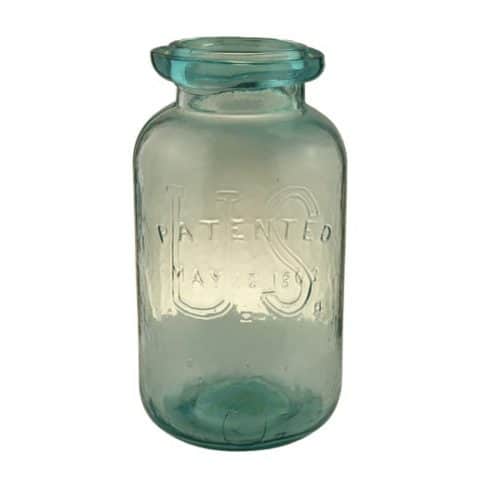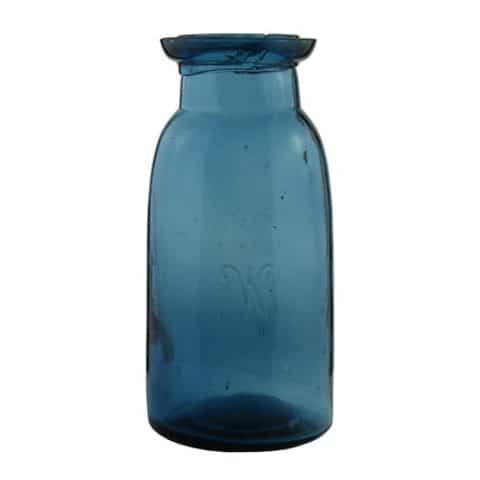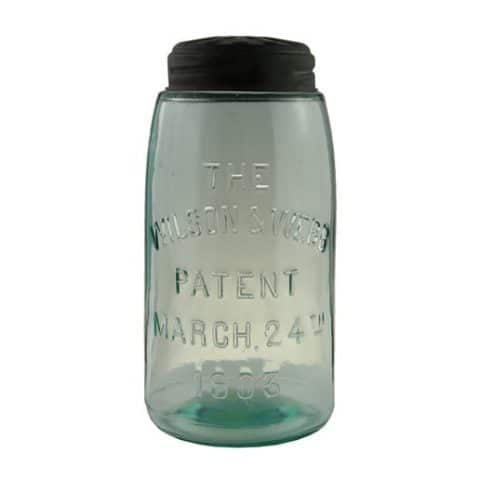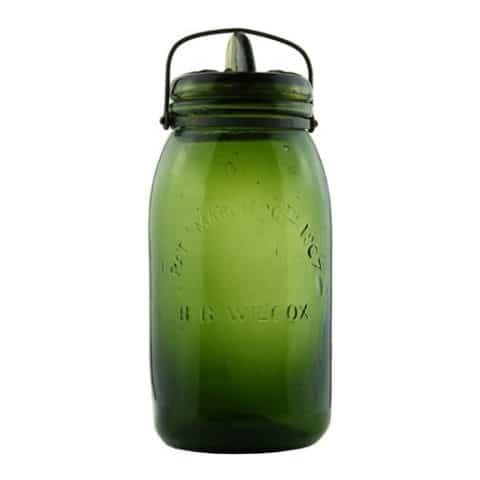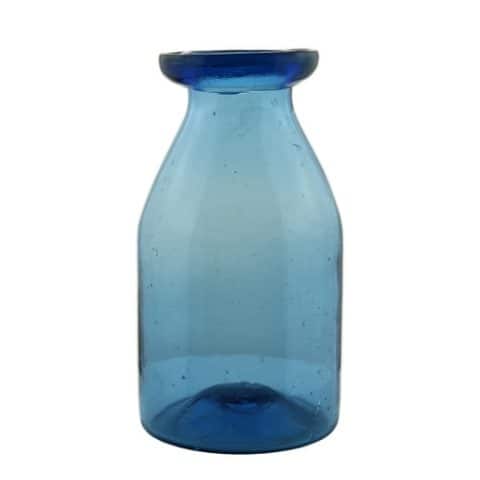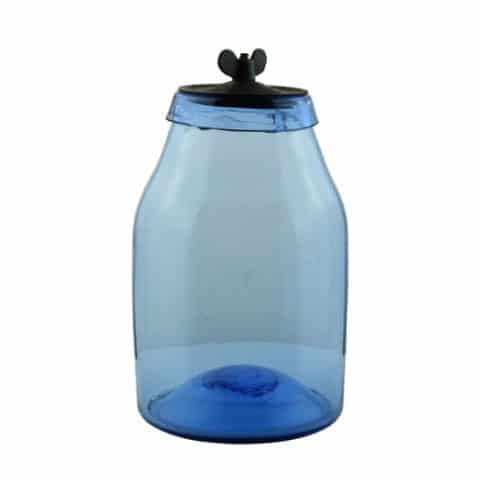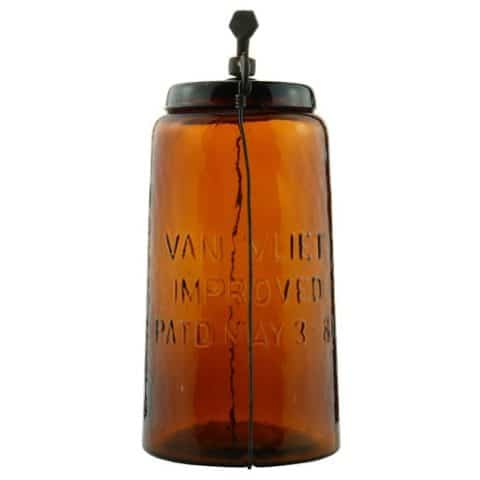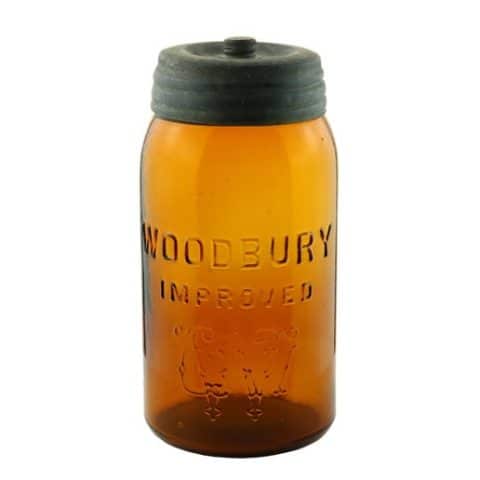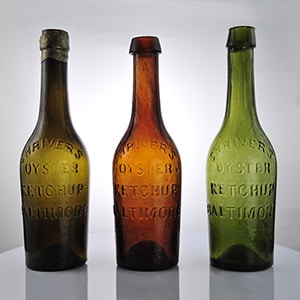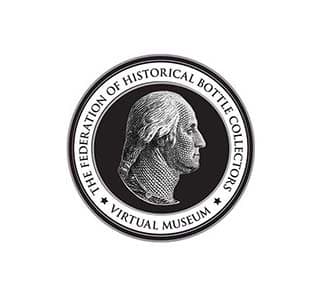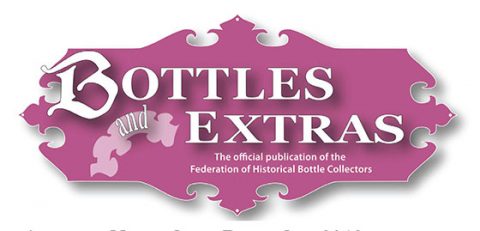Hartell’s Glass PatENTEd 1858 Air-Tight Jar
Hartell’s Glass Air-Tight Cover
PatENTEd Oct. 19, 1858
Gambogia Druggist Label Under Glass
Thomas R. Hartell, Philadelphia, Pennsylvania
Black (Deep Amethyst) Quart
Provenance: Jerry McCann Collection
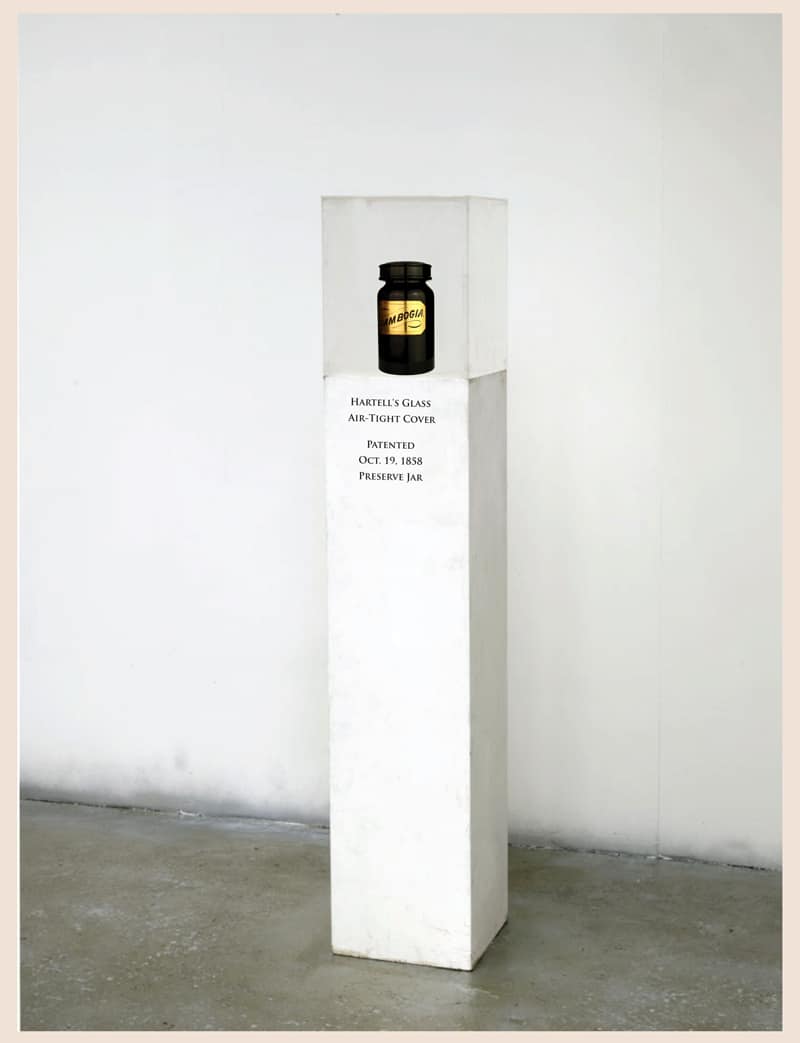
Our “Hartell’s Glass Air Tight Cover” example is interesting as it represents a label-under-glass apothecary jar that is rarely found. The condition is excellent in this dark amethyst or almost black glass jar. Period advertising stated that the Hartell Jar lids used glass on all sides and there was no danger of being poisoned by metal.
The patentee was Thomas R. Hartell of Philadelphia, Pennsylvania. The jar was made circa 1858-1863 by the Union Glass Works in Philadelphia. Hartwell teamed up with John Letchworth to form Hartell & Letchworth in 1858 who were the new proprietors of the glassworks. Located in the Kensington section of Philadelphia, the Union Glass Works opened in 1826 and remained in production until 1880 or so under various ownership. See the GI-119 Bust of Columbia Liberty Cap – American Eagle portrait flask in the Historical Flask Gallery.
There is a glass cap form variation with spikes around its outside perimeter. These Hartell jars have a history of being used as chemist jars and the caps were used on jars that contained poisonous compounds.
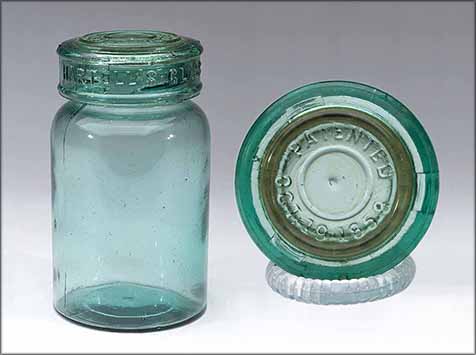
Hartell’s Glass Air-Tight Cover jars were patented in 1858. This patent date is embossed on the glass jar top reading ‘PATENTED OCT. 19, 1858’ while ‘HARTELL’S GLASS AIR-TIGHT COVER’ is embossed on the outer skirt of the glass lid. The jar is found in aquamarine, black (deep amethyst), cobalt blue, and green glass. The container was hand-blown and has a ground lip. The closure is a top seal on a ground lip with three lugged screw caps engaging three inclined ramps on the jar’s neck.
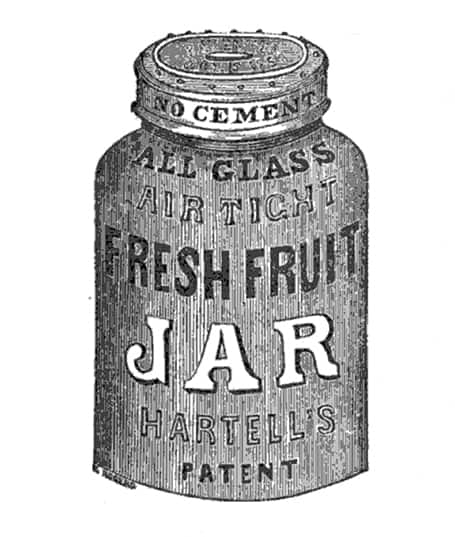
From The Home Manual: Or, The Economical Cook and House-book: Hints on the Daily Duties of a Housekeeper by Elizabeth Nicholson, 1865:
These vessels were used during the last summer in incredibly large quantities and with the most complete success. They may be obtained in most of the principal cities and towns in the country, of the agents. They are accompanied with explicit directions for use, and valuable recipes for putting up fruits and vegetables.
The Home Manual: Or, The Economical Cook and House-book: Hints on the Daily Duties of a Housekeeper by Elizabeth Nicholson, Ashmead & Evans, 1865
We are glad to be able, from actual trial, to give this strong Hartell’s self-sealing jar. testimonial in favour of so useful an invention. The following methods of Preserving Fruits, etc., have been practically tested, the two past seasons, with the Hartell Jar, and, if carefully followed, will not only be found to succeed, but the whole operation of putting up Winter Stores will be found so easy and simple, that the most inexperienced housekeeper need never fail.
Fruit and Vegetables put up fresh in these Jars, are admitted by medical men to be far more wholesome and nutritious than by the old plan of cooking— most of the leading physicians in this city having them in use. Metal Jars or Covers have long been considered objectionable for preserving anything containing acidity, and the Hartell Jar, being wholly of glass, and fastened and unfastened in a moment by a slight turn of the cover, and requiring no cement, will be found upon trial to be a perfect success.
One thing should be borne in mind, and that a very important one, in selecting Fruit for preserving, that which is fairly ripe, without softness or bruises should be preferred, and the same rule will apply to Vegetables. Tomatoes should be chosen with as much flesh and as little seed as possible.
The Hartell Jar and Cover being wholly of glass, care should be taken not to put a hot cover on a cold Jar, or the reverse, as the difference in temperature, may cause one or the other to break; but in heating up be careful to place the cover loosely on the Jar, so they may be of equal temperature when filled, and should you boil them in any vessel to expel the air, place a cloth or some straw on its bottom to prevent the glass from heating too suddenly at one point, by coming in contact with the bottom of the vessel.
Let the fruit be warming near the fire. While the fruit is stewing; have corks to fit, bladder lined, put in the fruit a little at a time, boiling hot; warm your cement, meanwhile, insert the cork, taking care to have the glass full to the cork, press down tightly; then put another piece of wet bladder over the cork, tieing it down tightly; invert the glass into the cement, then stand it up to harden; when hard, roll the edge of the glass again in the hot cement, and you have a perfectly air-tight vessel. The very best and safest mode, however, and one which servants must be doubly-refined stupid not to succeed in, is Hartell’s Patent Self-sealing Jars.
Extra: Darrell has another very interesting jar and one in which I have never seen before until seeing his photos, a cobalt blue Hartell jar. And according to him, it’s the only example he’s ever seen or heard of in that color. The jar came from the Al Vignon collection and he claims a fair amount of the jar has been reconstructed. There are some big chunks that have been repaired but he takes that all in stride. He always reminds people “if you want the Venus de Milo with arms then you just don’t want the Venus de Milo because the only one known doesn’t have any arms. Be happy with what you get.” Great advice since a one-of-a-kind jar, after all, is what it is.
Midwest Glass Chatter, 1972
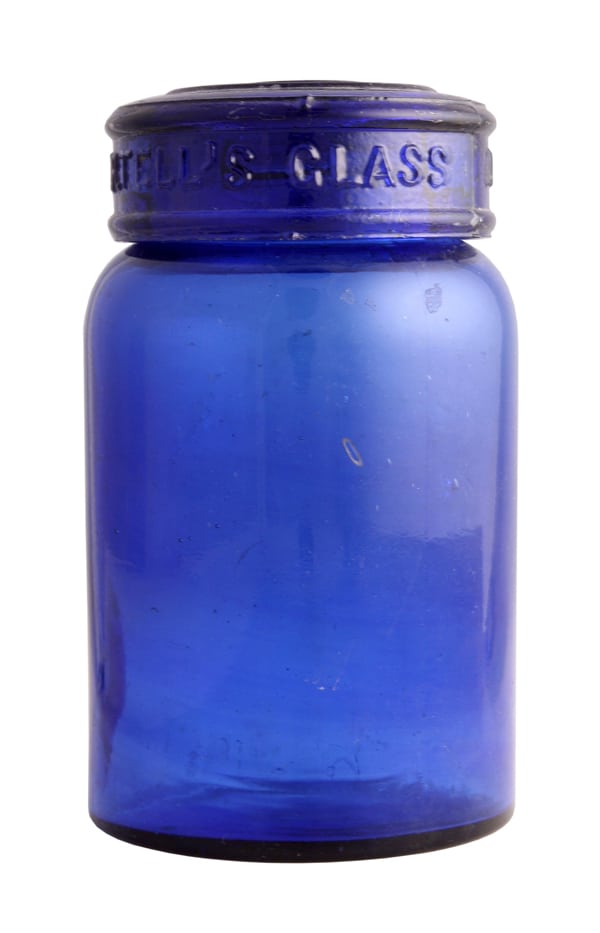
Primary Image: Hartell’s Glass Air-Tight Cover preserve jar imaged on location by the FOHBC Virtual Museum midwest studio led by Alan DeMaison.
Support: Hartell’s Patd 1858 Pint in Steel Blue. The closure is aqua with a correct style glass cap (has a manufacturer’s under-fill at the bottom edge). Overall ground wear, normal roughness of the ground mouth, a small burst bubble on the shoulder. 1860s. Extremely rare in this color. – Greg Spurgeon, North American Glass.
Support: Auction Lot 038: Hartell’s Patd 1858 Air Tight Fruit Jar Quart in a greenish coloration. Original closure. Sparkling glass. Flaking of the ground mouth. Embossing on lid only. Base is unmarked. 1860s. – Greg Spurgeon, North American Glass.
Support: Auction Lot 1313: Hartell’s Jar w/ Original Glass Pharmacy Label, Quart, Black amethyst, Closure: correct original Hartells style glass lid with 1858 patent date, in the exact matching Black Amethyst color and retaining the original undisturbed sealing gasket, shiny appearance, Condition: No damage, flaking all around the ground mouth. Note that the original glass label is in good shape (the dark area on the label shown in the photo is merely a reflection, the label is in fact a bright and solid gold color all over), base unmarked, age: 1860s, Availability: Rare, especially with the original undisturbed pharmacal label, because most examples had their labels removed by fruit jar collectors and dealers in years past – Greg Spurgeon, North American Glass
Support: Quart Cobalt blue example from the Darrell Plank collection. This example only has the embossed patent data on the lid top. The pint cobalt blue Hartell’s Glass Air-Tight jar is also from the Plank collection.
Support: Auction Lot 204: “Hartell’s Glass Air-Tight Cover / Patented / Oct. 19, 1858.” Fruit Jar Lid, America, 1858-1870. Cylindrical with internal lugs, rich aquamarine, ht. 1 1/4 inches, dia. 3 9/16 inches. This lid fits jar L #1211. Fine condition. – Norman Heckler, Norman C. Heckler & Company
Support: Reference to Fruit Jar Annual 2020 – The Guide to Collecting Fruit Jars by Jerome J. McCann
Support: Reference to Red Book #11, the Collector’s Guide to Old Fruit Jars by Douglas M. Leybourne, Jr.
Join the FOHBC: The Virtual Museum is a project of the Federation of Historical Bottle Collectors (FOHBC). To become a member.

